The Panasonic Z95B is a device that makes it hard not to raise your eyebrows in admiration. From the very first moments, it is clear that we are dealing with an absolutely exceptional screen, capable of bringing out everything that is best in movies and games. The black levels are perfect, HDR brightness is stunning, and the colors – whether in movie mode or in games – show that Panasonic's factory calibration has reached a level that other manufacturers can only learn from. Add to this the fantastic sound from the built-in soundbar and excellent viewing angles, and we get a television picture that seems complete in terms of image quality and audiovisual immersion. However, the longer we used it, the more the impression grew that we were dealing with a device that was torn in two. On one hand, it is like a reference monitor, perfect for assessing video materials and enjoying movies or series, and even for gaming; on the other hand, it is a television that can disappoint in its everyday functionality. The FireTV in its current version can be frustrating, there are significantly fewer apps than with competitors, some fail to install at all, and the system can experience hiccups. Additionally, there are odd system issues such as the lack of support for basic subtitles in movies from USB – seemingly minor details, but they contribute to the overall picture of a device that is far from perfect in everyday use. And this is where the biggest paradox of the Z95B emerges. It is a television that likely offers one of the best images currently available in the living room, and at the same time, it is one that is hard to recommend as a typical "television" without reservations. The competition, while often slightly weaker visually, tends to be simply more user-friendly and costs significantly less. Therefore, the Z95B is a proposition for image purists, for those looking for a reference screen and who are willing to accept all the compromises related to the other non-functioning features. For them, it will be the dream device. For the rest – a demonstration of Panasonic's power and rather a form of curiosity.
- Matching (Score)
- Our verdict
- TV appearance
- Where to buy
- Contrast and black detail
- HDR effect quality
- Factory color reproduction
- Color reproduction after calibration
- Smoothness of tonal transitions
- Image scaling and smoothness of tonal transitions
- Blur and motion smoothness
- Console compatibility and gaming features
- Input lag
- Compatibility with PC
- Viewing angles
- Daytime performance
- Panel details
- TV features
- Apps
- Playing files from USB
- Sound
Panasonic Z95B vs Haier Q80FUX
Direct comparison


Panel type: WRGB OLED
Resolution: 3840x2160
System: Amazon FireTV
Model year: 2025
Complete the survey to find out the result

Panel type: LCD VA
Resolution: 3840x2160
System: Google TV
Model year: 2025
Complete the survey to find out the result

Overall rating
8.5
5.8
Movies and series in UHD quality
9.0
5.9
Classic TV, YouTube
8.8
5.6
Sports broadcasts (TV and apps)
8.5
4.7
Gaming on console
9.6
6.7
TV as a computer monitor
8.6
6.0
Watching in bright light
7.4
4.8
Utility functions
6.8
5.6
Apps
7.2
9.6
Sound quality
8.9
5.5
Complete the survey to find out what fits your preferences
Advantages
Exceptional black
Amazing brightness - over 2000 nits in HDR
Factory colors are almost reference quality
Support for multiple HDR formats including Dolby Vision and HDR10+
Phenomenal motion smoothness - OLED panel, 144Hz
Excellent choice for gamers, HDMI 2.1, VRR, ALLM, Dolby Vision Gaming, and HGiG
Good compatibility with PC - 144 Hz, G-Sync, and FreeSync
Very good sound from the built-in soundbar
Decent viewing angles
Very good native contrast and decent black (thanks to the VA panel)
PFS / QLED Filter - Wide color gamut (about 95% DCI-P3)
Remarkably low input lag (below 10 ms at 120Hz and about 12 ms at 60Hz), making it a great choice for fast-paced games.
Support for 120Hz at lower resolution (Full HD) and the presence of VRR and ALLM
Support for Dolby Vision
Well-functioning file player from USB
Presence of analog headphone output (jack)
Disadvantages
Fire TV – no app, strange errors, untranslated menu
No DTS:X support
No option to enable external subtitles from USB memory
Only two HDMI 2.1 ports, which is definitely too few in this class
Price clearly higher than competitors, which often lack such system issues
The image is quite "blown out" in HDR
Google TV software full of bugs, poor translations, and issues
Missing any image enhancement features (noise reduction, gradient smoothing)
Average brightness
Flat, bassless sound
High input lag in Dolby Vision mode for gaming
Weird and poorly ergonomic remote
Our verdict
The Haier Q80FUX TV is one of the most schizophrenic proposals we've had in our editorial office for a long time. On one hand, we have a solid piece of equipment: a VA panel that guarantees deep blacks, as expected in this segment, and a QLED quantum filter that can indeed generate juicy, eye-catching colors. This is the foundation on which a truly competitive mid-range receiver could have been built. Unfortunately, all this potential of the panel is systematically torpedoed by the software, which is a real ball and chain for this model. The biggest Achilles' heel of the Q80FUX is its total capitulation in the face of HDR10 content. The electronics seem to completely misunderstand how to interpret the signal, resulting in consistently blowing out the brightest parts of the image, turning them into a flat, milky blob. If we add the Google TV system, which – although functional – is unstable, full of errors, and irritating shortcomings, we get a picture of a raw product that clearly reveals the manufacturer's lack of experience. And just when we were ready to write this model off, we discovered its surprising niche. Once connected to a console, the Q80FUX undergoes a transformation. It turns out that this TV offers wonderfully low input lag, fully supports VRR, and can accept a 120Hz signal at Full HD resolution. In the gaming world, where responsiveness is everything, these parameters put it in a very good light. So we are dealing with a device of very narrow specialization. This is not a universal living room TV – it lacks stability and, above all, any correctness in handling films. It is more of a budget, large-format monitor for gamers who are able to consciously overlook all its software flaws in exchange for those few key attributes essential for console/PC at a relatively affordable price.
TV appearance
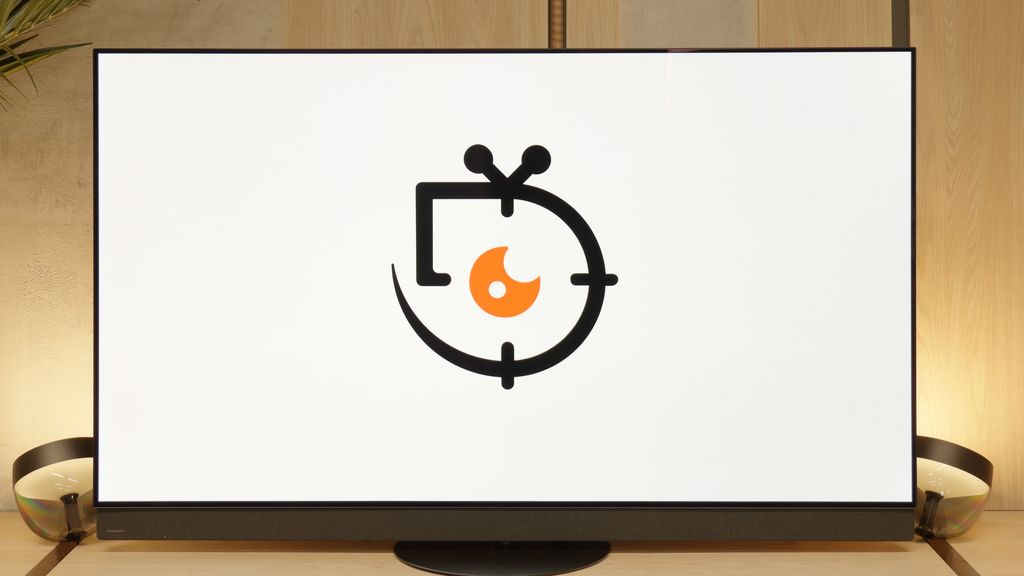


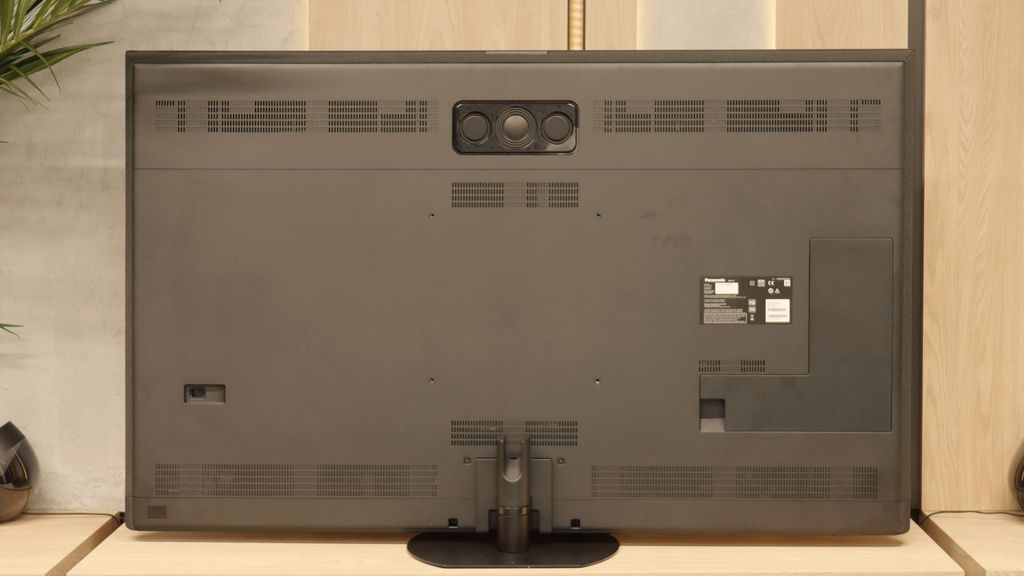
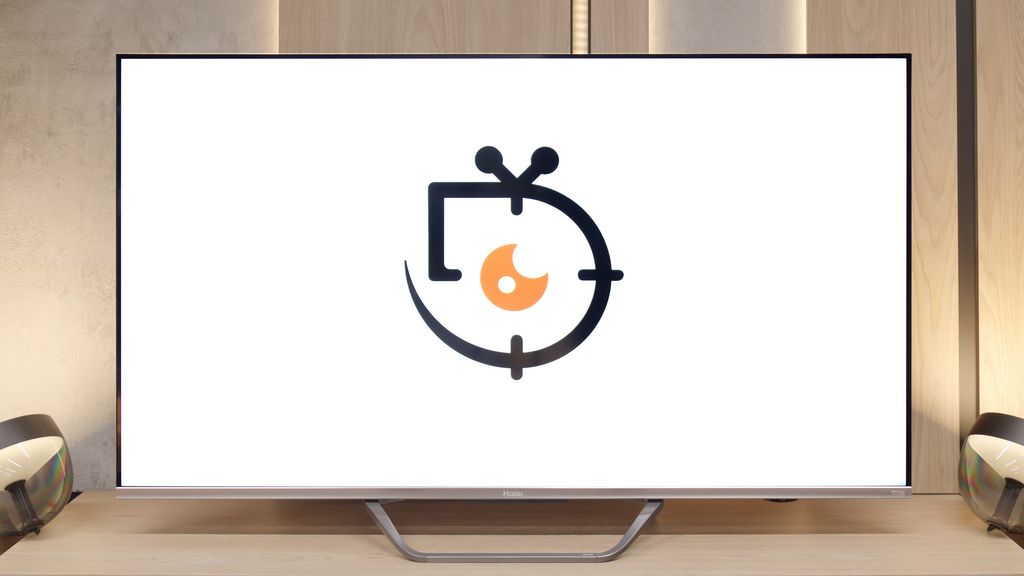
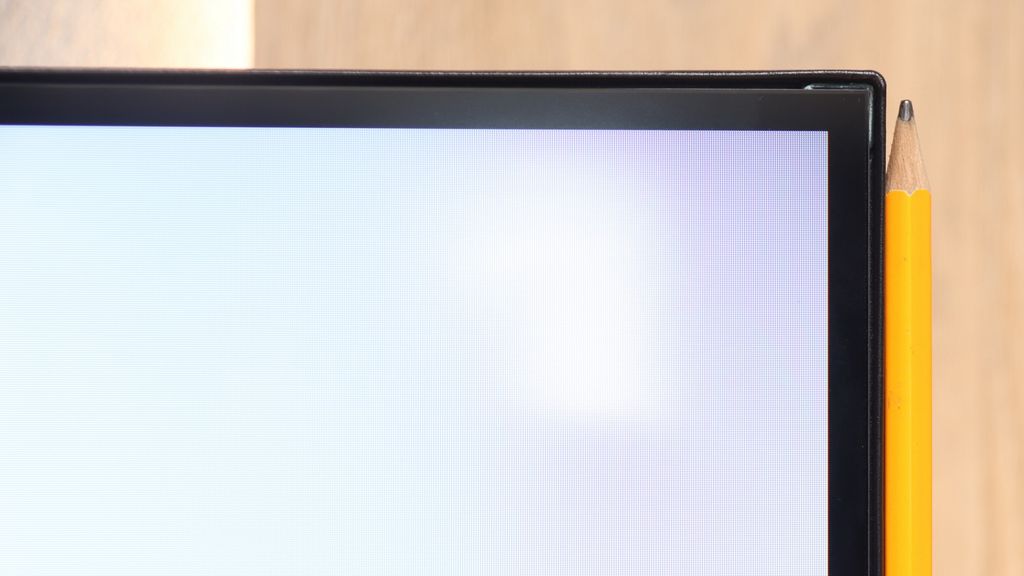
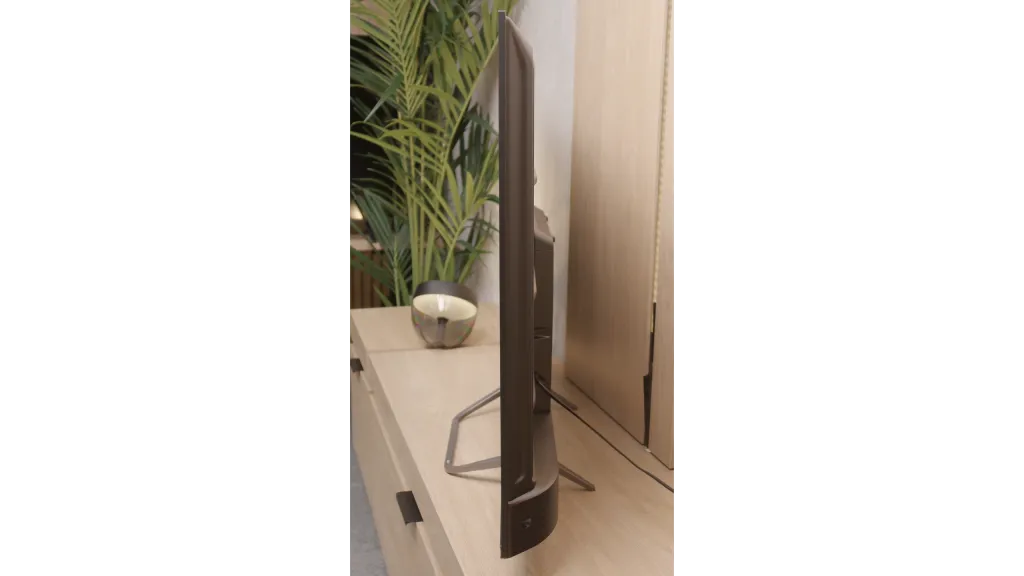
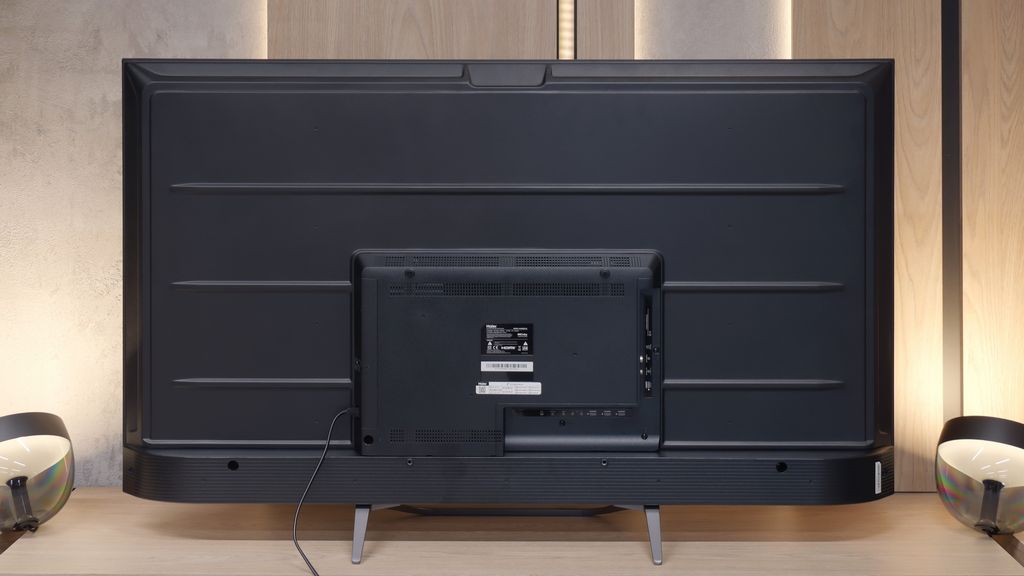
Contrast and black detail
10/10
6.3/10
Local dimming function: No
Contrast:

Result
∞:1

Result
∞:1

Result
∞:1

Result
∞:1

Result
∞:1

Result
5,200:1

Result
7,400:1

Result
7,550:1

Result
7,300:1

Result
6,450:1
Halo effect and black detail visibility:

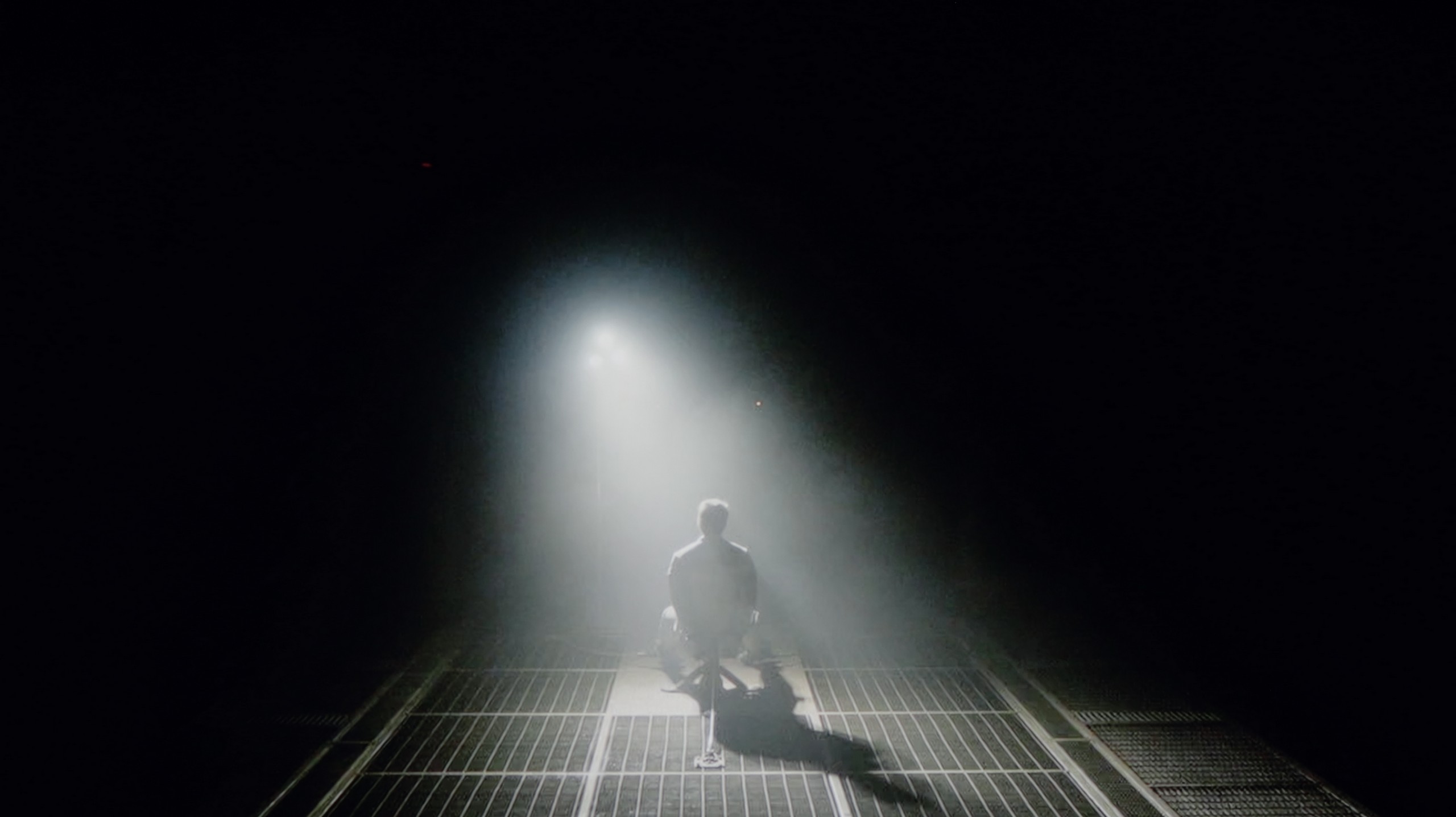
The black and contrast on the Panasonic Z95B can be summed up in one word – perfection. As with any OLED television, the panel controlling individual pixels allows for complete dimming of parts of the image, resulting in absolute black. This gives the Z95B ideal separation between bright and dark elements of the scene, and no glare, lightening, or halo effects are visible on the screen. Even in the most demanding sequences, where other LCD televisions reveal their limitations, the picture here remains clear and readable. In practice, it is hard to imagine that OLEDs could improve any further in this category, as the technology of self-dimming pixels simply has no weak points in terms of contrast. The Panasonic Z95B does not deviate from this pattern and demonstrates that there is no room for significant improvements in terms of black – it sets a reference level that is difficult to surpass.
I must admit, when approaching a receiver in this price range, one instinctively crosses their fingers, hoping that at least the black won't be a gray blot. Meanwhile, the Haier Q80FUX, specifically the 55-inch model present in our editorial office, can very positively surprise in this regard. Its secret lies in using a VA panel, which by nature has an inclination for generating high contrast. And these are not empty promises. During screenings, in most film shots, the contrast consistently reported levels from 5000:1, often reaching as high as 8000:1. These are really strong results, considering the fact that this television does not possess any, even minimal, form of local dimming. Translating this into couch experiences: given its price realities, the Q80FUX offers simply solid blacks. Of course, it's not that perfectly velvety depth that makes the screen disappear into darkness. When we conduct a screening in conditions of complete isolation from light, we will notice that in the darkest parts of the image, the black reveals its budget origins, slightly shifting towards a bluish tint. However, this is a defect easy to mask – just a little light from a lamp in the corner of the room is enough for this nuance to become invisible, and the image to regain a satisfying depth.
HDR effect quality
8.7/10
4.9/10
Luminance measurements in HDR:

Result
2069 nit

Result
2118 nit

Result
2131 nit

Result
2114 nit

Result
1442 nit

Result
308 nit

Result
327 nit

Result
352 nit

Result
330 nit

Result
344 nit
Scene from the movie “Pan” (about 2800 nits)


Scene from the movie “Billy Lynn” (about 1100 nits)


Static HDR10


Dynamic: Dolby Vision
Dynamic: Dolby Vision


HDR luminance chart:
Haier Q80FUX
HDR luminance
Panasonic Z95B
HDR luminance
Luminance of RGB colors
The quality of HDR in the Panasonic Z95B belongs to the absolute elite. Thanks to the latest generation panel, named by the manufacturer Primary RGB Tandem OLED, the television can achieve over 2000 nits of brightness in movie scenes. The effect is impressive and can amaze with the intensity of light, giving a sense of contact with the screen that goes beyond previous experiences. Similar sensations accompanied us only during tests of the LG G5, Samsung S95F, or Philips OLED910. Of course, there are moments when the device's algorithms decide to limit luminance – this especially applies to full-screen bright sequences, such as the closing credits in the movie The Meg. Even then, the Z95B maintains a level of around 1500 nits, which is still a result that makes a huge impression. One can say that HDR in this model has been brought to a masterful form. A significant step forward is also visible in the reproduction of the color palette. The new tandem OLED panel does not yet match the best QD-OLED screens in terms of full gamut coverage, but the gap between these solutions has significantly narrowed. When watching movies, the differences are subtle enough that it's hard to notice them under normal conditions, and the colors remain vivid and saturated.
Alright, let's move on to the topic that generates so much discussion, namely the capabilities of the TV in HDR mode. Let's make it clear right away: the Haier Q80FUX is certainly not a brightness demon. The panel of this receiver can generate about 350 nits at peak, which in today’s reality is an absolute minimum to even talk about the presence of extended HDR tonal dynamic range. On the plus side, this power is at least stable – regardless of the test pattern or movie scene we used, the measurements invariably oscillated around 300-350 nits. These are therefore at best adequate results, definitely far from the stunning showcase of capabilities that we know from more expensive models. Fortunately, there is one aspect in which the Q80FUX makes up for these shortcomings and does so abundantly. After all, we are talking about a QLED TV (or more precisely, PFS LED), which means that thanks to the quantum dot filter applied to the matrix, it can generate really juicy, vibrant colors. These are not empty promises – a DCI-P3 color gamut coverage reaching nearly 95% is an impressive result that directly translates into very pleasant, saturated colors for the eye.
Factory color reproduction
9.5/10
4/10


Factory Mode
After calibration
The factory color reproduction in Filmmaker mode, my friends, is a true phenomenon in the case of the Panasonic Z95B. I'm talking about our test unit, but the result was so good that it's hard to believe. The only detail to nitpick is a slight lack of blue in the white balance, but other than that, the television, right out of the box, displayed an image like we've never seen in factory mode. Color palette tests, Color Checker – everything pointed to values below Delta 2. This is a much lower result than the threshold of human eye perception, which means, quite frankly, that the viewer stands no chance of noticing serious deviations. It looks as if Panasonic really calibrated this model at the factory stage. Of course, we cannot rule out that we got an exceptionally well-set unit, but the result is still impressive. We are very strict in our assessments of factory calibration, and here our jaws simply dropped.
Factory settings for film mode are rarely perfect, but in the case of the Q80FUX, we encountered a noticeable imbalance. In SDR content, the image was definitely too warm, which resulted from an excessive amount of red in the white balance, giving it a slightly sepia tone. Contrarily, in HDR materials, the television fell into the other extreme—the excess of blue created an unnatural, cold effect. However, it wasn’t the whimsical white balance that was the biggest problem with this TV. The real culprit, responsible for the previously described issues, was hidden deeper. It turned out that the Q80FUX had completely misaligned gamma values and, crucially for HDR, a poorly managed EOTF curve. It was these erroneous factory settings that caused notorious clipping of the brightest parts of the image, applying that characteristic milky filter over them. Thus, we found the source of the problem. This state of affairs led to overall, significant color errors that were easy to catch even for an untrained eye. Like every television we tested, we decided to calibrate this model as well, and you can find the results of those adjustments in the next paragraph.
Color reproduction after calibration
9.8/10
6.1/10
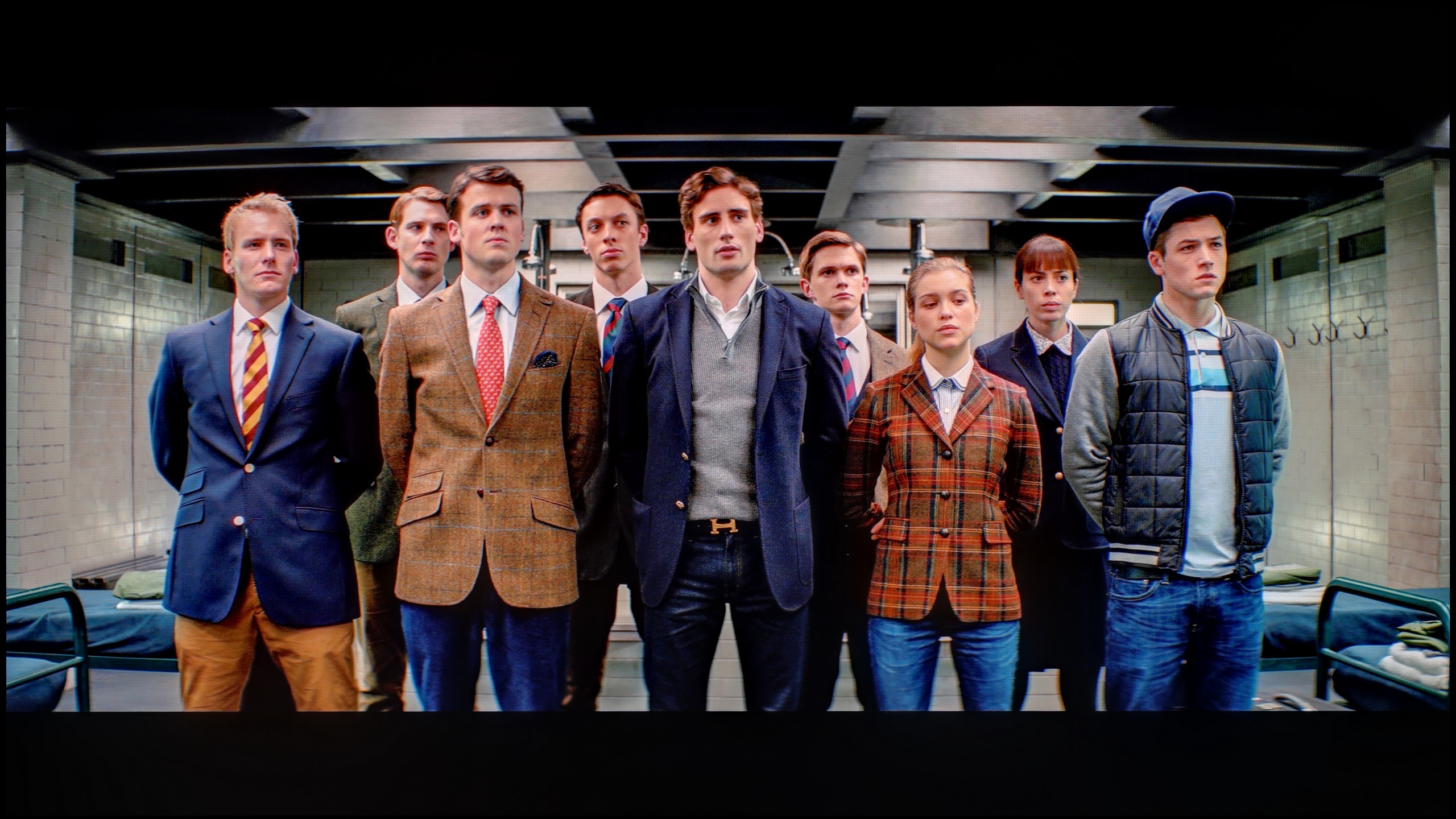



The color reproduction after calibration in the Z95B is a topic that is difficult to elaborate on for long because there simply wasn't much to be done here. A slight adjustment of the white balance was enough to eliminate the lack of blue, and at that moment the picture jumped to an almost reference level. I must admit that we haven't had such a small scope of work in a long time. If any of you are particularly observant, you might notice minimal deviations in the EOTF curve, but this is more related to the operation of the dynamic tone mapping function that we mentioned earlier. Really, this is not a flaw, but rather a feature of this solution, which intentionally changes the brightness characteristic depending on the scene. In summary, we are extremely impressed. The Panasonic Z95B is a television that already looks great right out of the box, and after calibration, it reaches a level where it is really hard for us to find anything to improve.
The results of our calibration efforts must, unfortunately, be considered twofold. Overall, the image is indisputably better than before the corrections, but the biggest winner of this process turned out to be SDR content. It is here, after clarifying the gamma and white balance graphs, that we obtained results that can confidently be called very good. After the setup, the Q80FUX truly shines in standard dynamics, showing only slight errors in the most challenging skin tone reproductions. Unfortunately, the weakest link still remains HDR content. And here lies the paradox: even though we managed to calibrate the white balance almost to perfection, the overall color errors still remain at a fairly high level. The reason is that the television still interprets the static HDR10 metadata "in its own way," stubbornly enforcing that unfortunate washed-out image effect, which inevitably leads to significant distortions. Although we successfully eliminated the factory excess of blue color, due to this electronic interference, the screen can still tend to fall into somewhat too cold tones. This television just has it this way.
Smoothness of tonal transitions
7.8/10
7.5/10




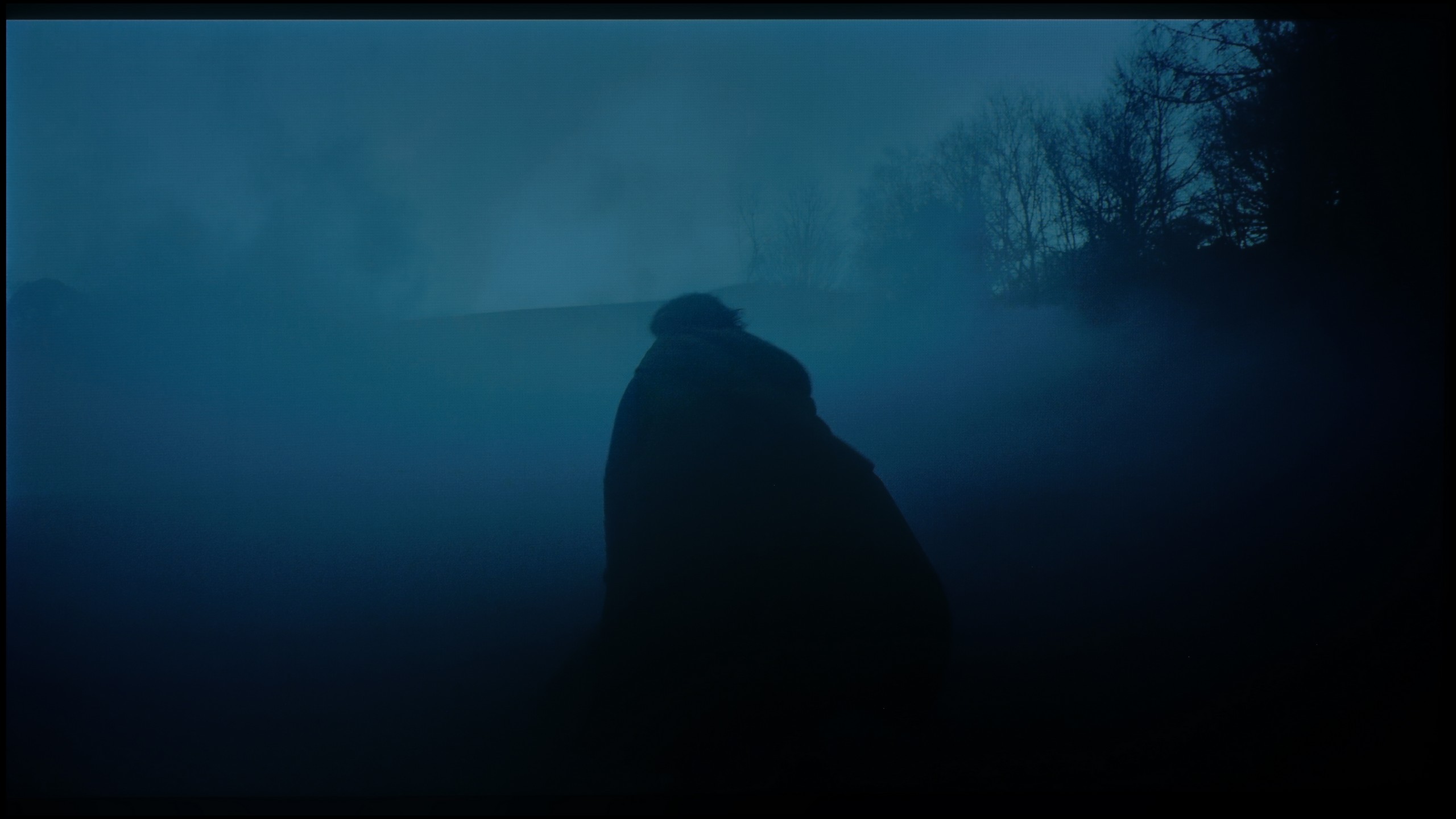







Posterization, or color banding, was the Achilles' heel of Panasonic's flagship Z95A last year. In the new Z95B, it is clear that the manufacturer has made a significant effort to improve the gradation issue, and the problem has largely been addressed. In most scenes, color banding is no longer visible, and tonal transitions are smooth and appear natural. However, this does not mean that the problem has completely disappeared. In extremely difficult sections, especially in very dark scenes like those in the film Green Knight, some imperfections can still be observed. Nevertheless, it is encouraging that Panasonic has taken this issue seriously and made substantial progress, as the difference from the previous model is truly noticeable.
Analyzing the television's ability to handle subtle tonal transitions, known as "banding," leads us to interesting conclusions. The Haier Q80FUX skillfully blends neighboring colors in most scenes, creating a smooth, cohesive image. However, this is not an ideal process. During the tests, we noticed minor issues and imperfections in every test scene we used. These are perhaps not errors that aggressively catch the eye and spoil the movie experience, yet their presence is worth noting. Interestingly, this receiver shows no particular weaknesses or strengths in this regard – it handles this challenge exactly the same, whether displaying delicate gradients of a bright sky or dark transitions in shadows.
Image scaling and smoothness of tonal transitions
6/10
4/10
Smooth transition function
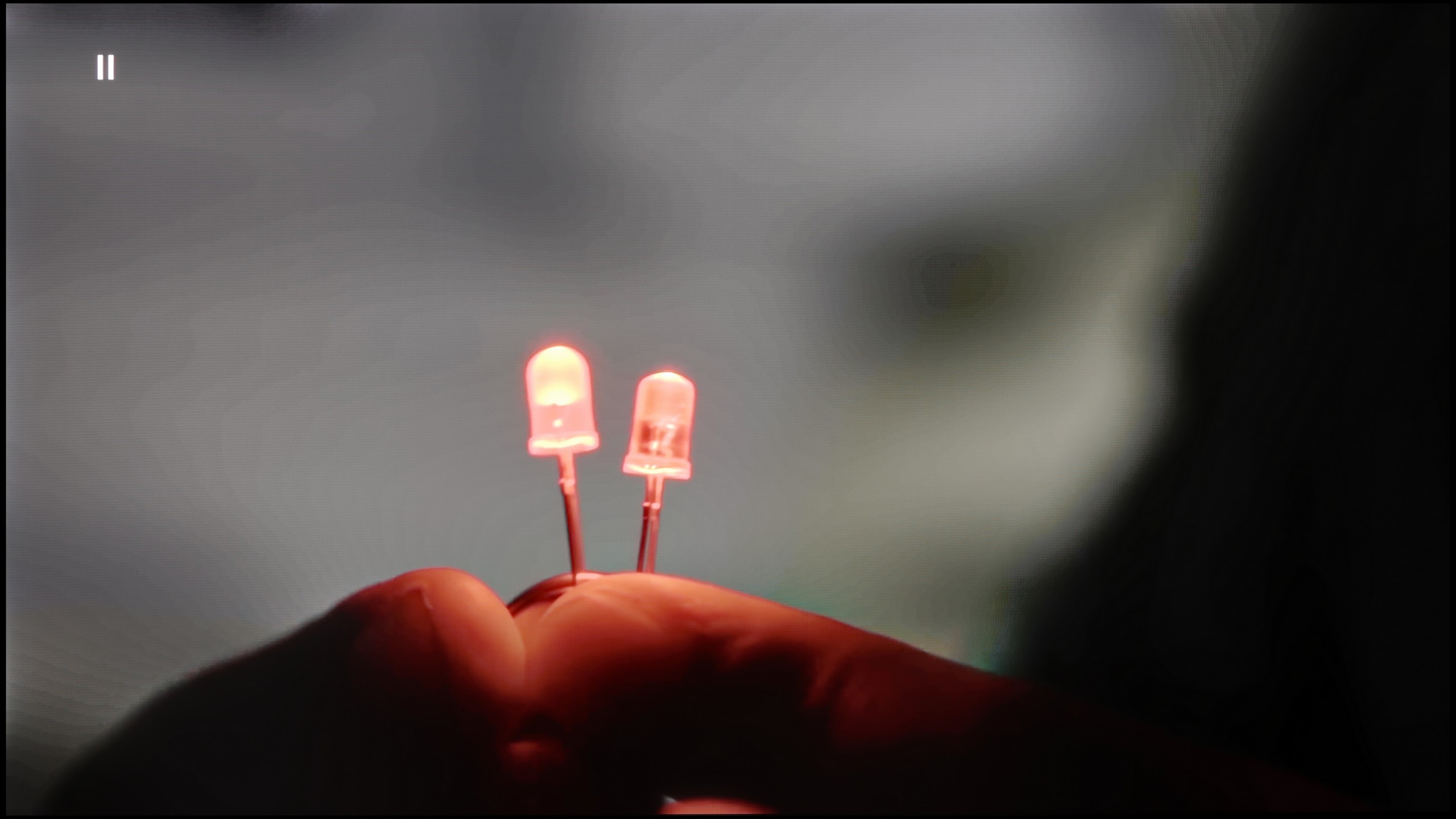
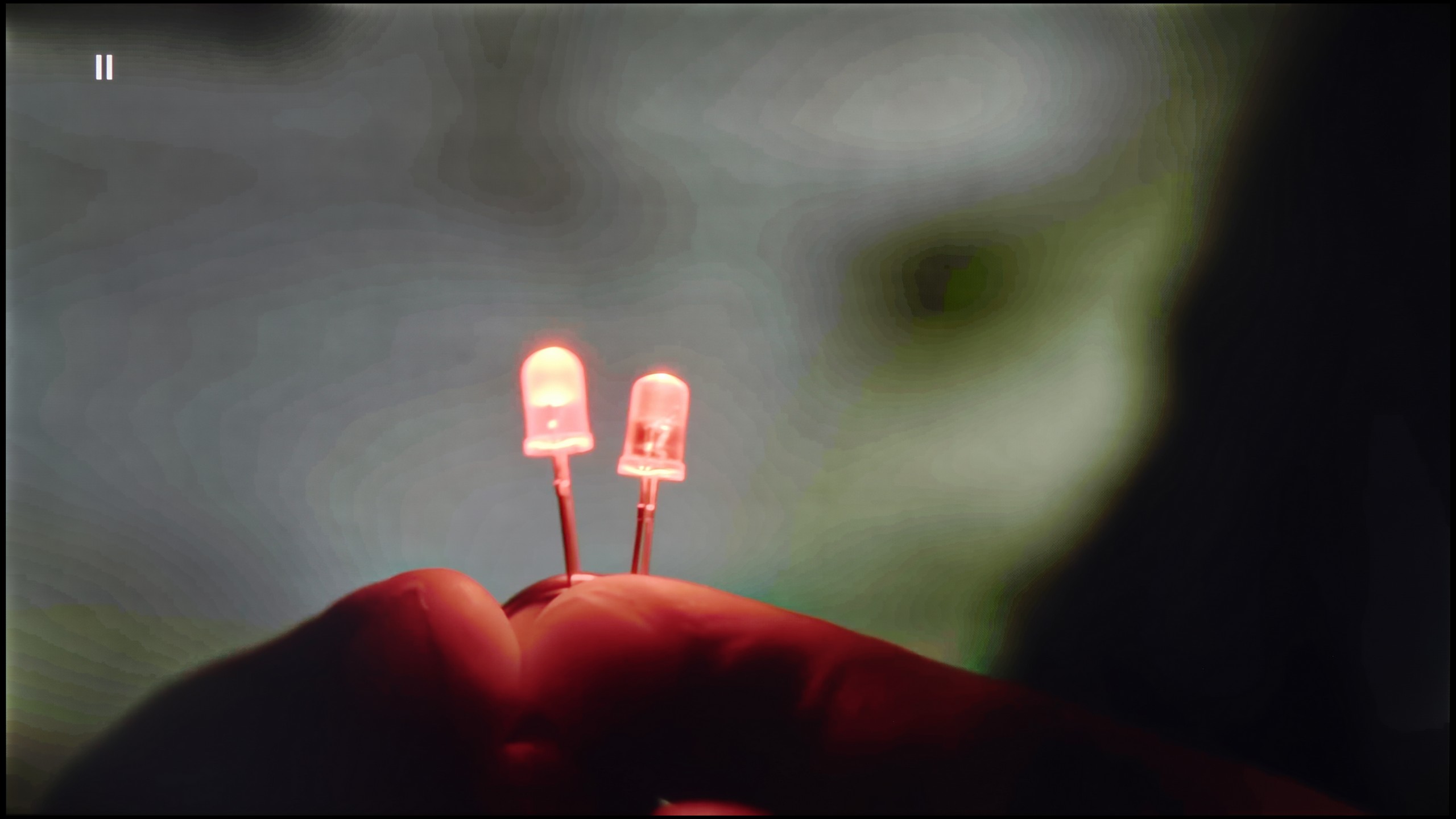
Image without overscan on the SD signal


Let's start with what works well. The upscaling in the Z95B is at a very high level – the picture in lower resolutions is clear and sharp, with only minor drawbacks being slight aliasing in some areas of the image. It's also important that the television does not crop the material in any way and maintains its aspect ratio, which is not always an obvious fact even in 2025.
The situation is worse when it comes to digital processing. Features such as "gradation smoothing" or "block noise reduction" practically do not work – the tested material looked identical regardless of the settings. We might as well point out that this function simply doesn't exist. This is somewhat disappointing, especially since Panasonic strongly promotes its HCX Pro AI II processor, boasting of the presence of artificial intelligence that improves picture quality. Meanwhile, in such a basic matter, the television does not deliver a real effect and looks worse than one might expect from top-of-the-line equipment.
If there is one area where Haier clearly shows that it has quite a bit to catch up on compared to the market leaders, it is digital image processing. The upscaling, well... is just okay. And that's about all that can be said about it. It does what it is supposed to do: it ensures that lower resolution signals don't scare you with harsh pixelation on the screen and don't look like an overly enlarged postage stamp. However, it is far from the finesse and "intelligent" sharpening that more experienced players in this market have developed over the years. The biggest drawback of the Q80FUX software, however, is the almost complete lack of additional "cleaning" and smoothing functions for the image. The receiver does not offer any noise reduction or gradient enhancement mechanisms. This means that with older or more heavily compressed materials, we simply have to accept that any imperfections in tonal transitions or color blending, which we mentioned earlier, will constantly accompany us during the viewing.
Blur and motion smoothness
8.5/10
4.5/10
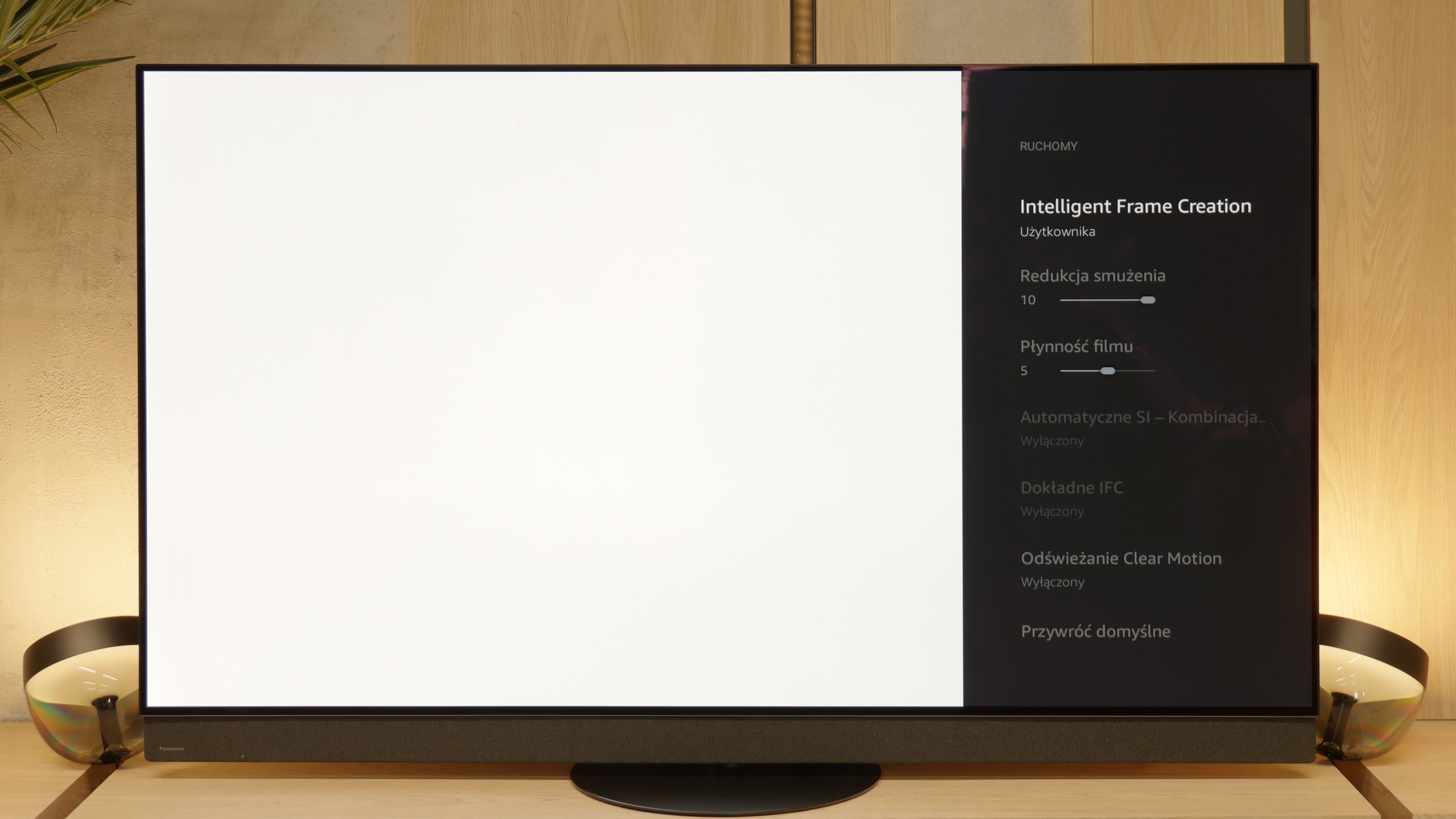
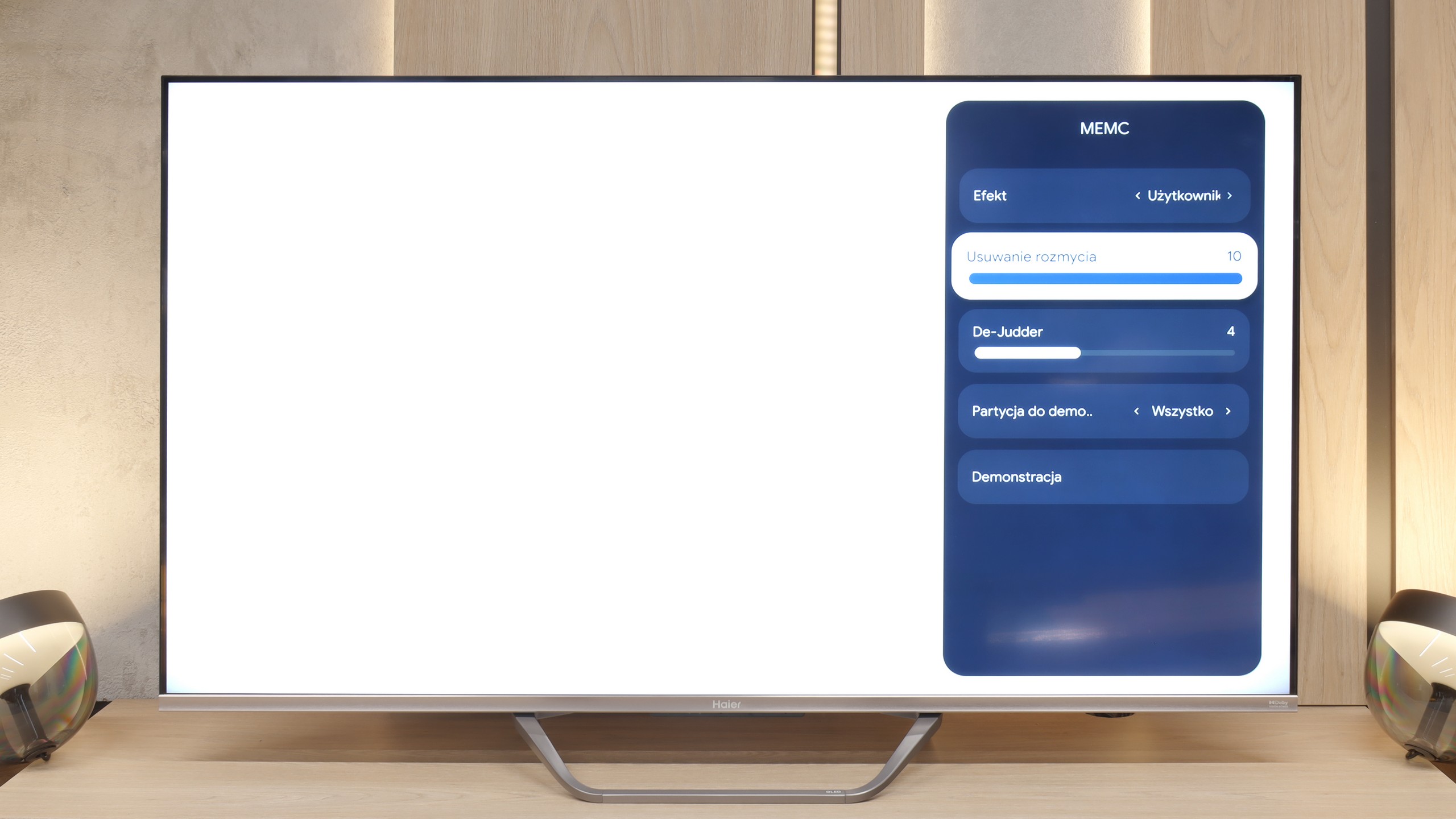
Blur (native resolution, maximum refresh rate):



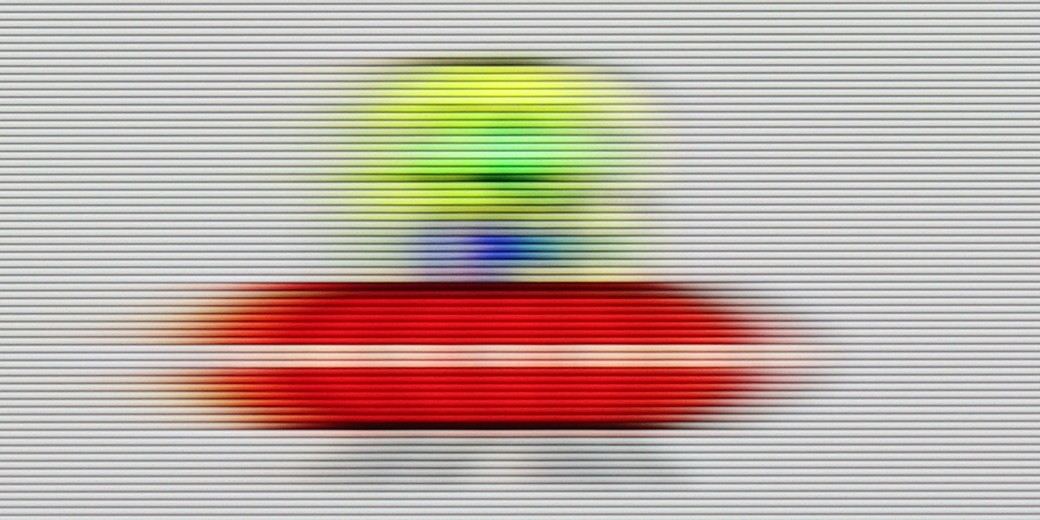
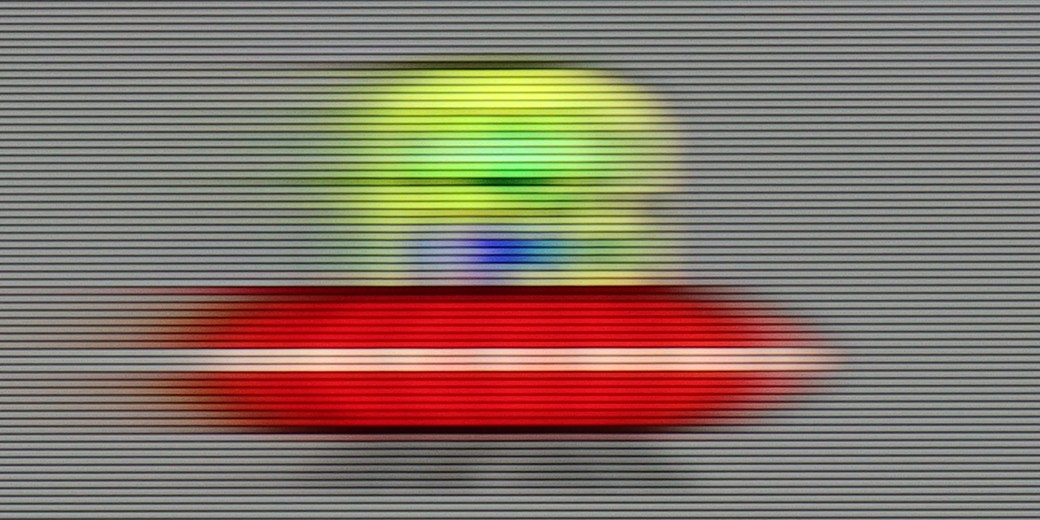
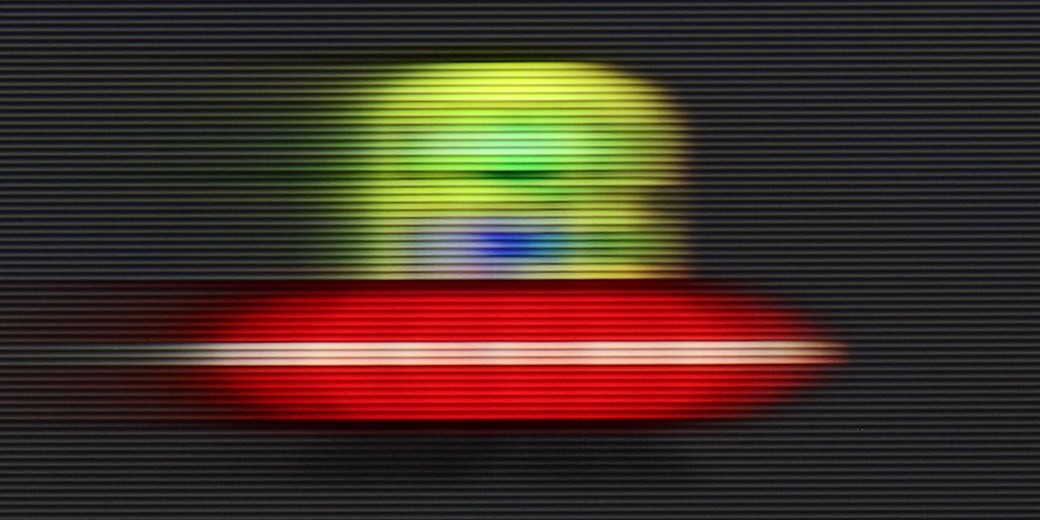
Blur (BFI function enabled):
Image flickers in this mode



Smużenie (4K@144Hz):



Smużenie ():
The OLED matrix with a very high refresh rate already provides an extremely sharp image even in dynamic sports scenes, such as soccer or basketball matches, and the Z95B is no exception. It's also very important that the television is equipped with the proprietary image smoothing system "Intelligent Frame Creation." Among the available sliders, the most important one turns out to be the one named "film smoothness," because it allows adjusting the motion to personal preferences when watching 24-frame material, that is, movies – from a more "frame-like" appearance to a smooth, almost theatrical effect. It's a bit of a shame that Panasonic did not choose to push the latest OLED matrix to 165 Hz, as Samsung did with the S95F or LG with the G5, because we know the panel is technically capable of it. On the other hand, this is mainly an advantage for PC gamers, so for everyday viewing this is not a significant drawback as we are limited to 120Hz.
The issue of motion fluidity and blurring is largely predetermined by the use of a 60Hz panel, which naturally makes it difficult to recommend this receiver to enthusiasts of very dynamic content. Fortunately, in the Q80FUX, we find a few options (though, as we will see shortly, actually only one) designed to improve the experience with older film productions. There is a "De-Judder" slider available, which indeed affects the smoothness of the image and allows us to adjust it to our preferences: from raw, cinematic frame rates to a more theatrical, smoothed presentation. However, a genuine surprise awaits us right next to it in the menu. There is also a second slider, supposedly dedicated to eliminating blur – this is a feature we usually encounter in 120Hz panels, aimed at combating motion blur in sports. However, as expected, recalling memories from testing the K85F model, here too this slider is merely a facade. Moving it does absolutely nothing to the image and it simply looks like an oversight by the product engineers who left a non-functional option in the software for this type of panel.
Console compatibility and gaming features
10/10
5.6/10
- ALLM
- VRR
- VRR range40 - 144Hz48 - 120Hz
- Dolby Vision Game Mode
Yes, high input lag
- Correct implementation of HGIG
- 1080p@120Hz
- 1440p@120Hz
- 4K@120Hz
- Game bar
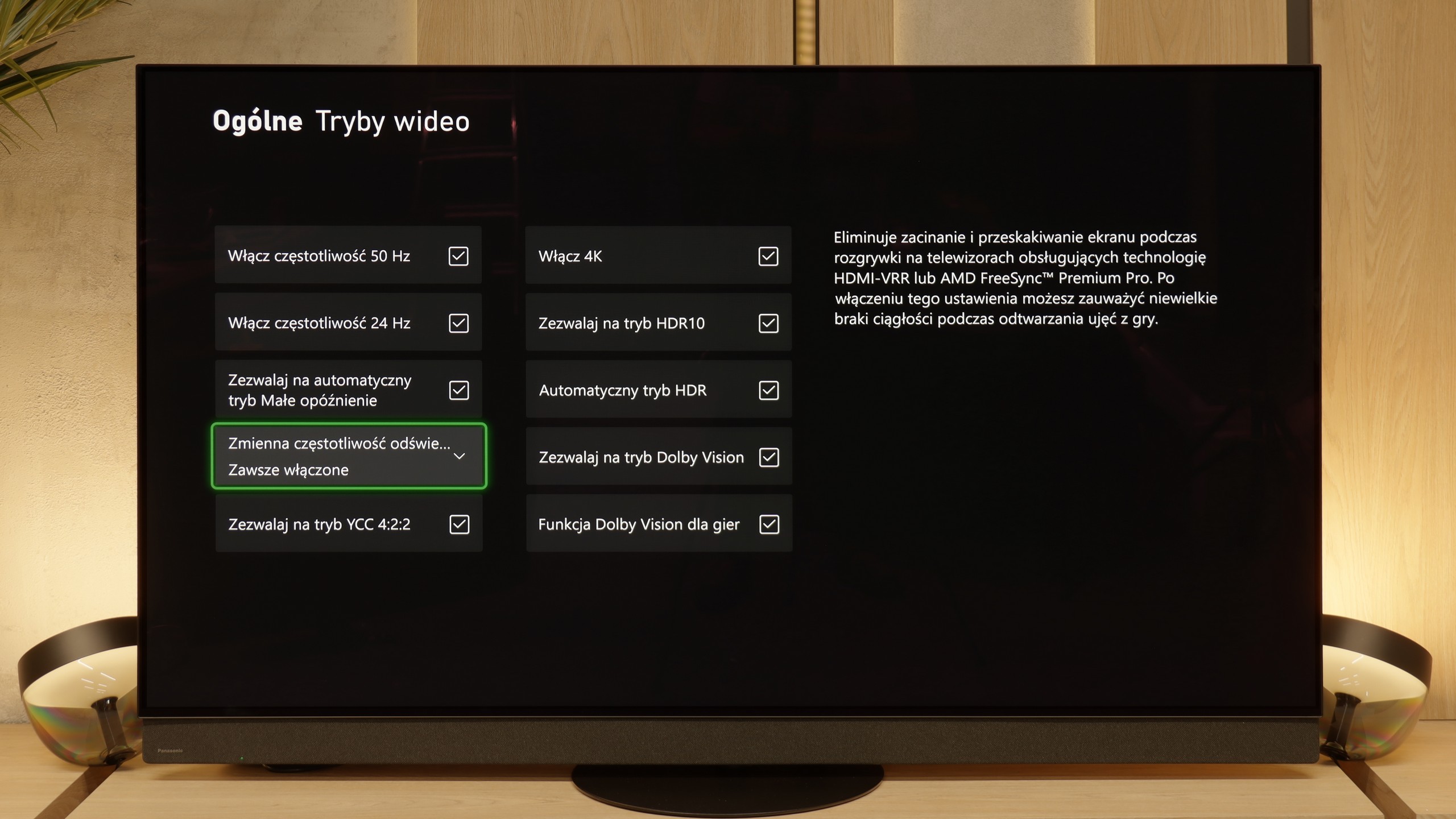
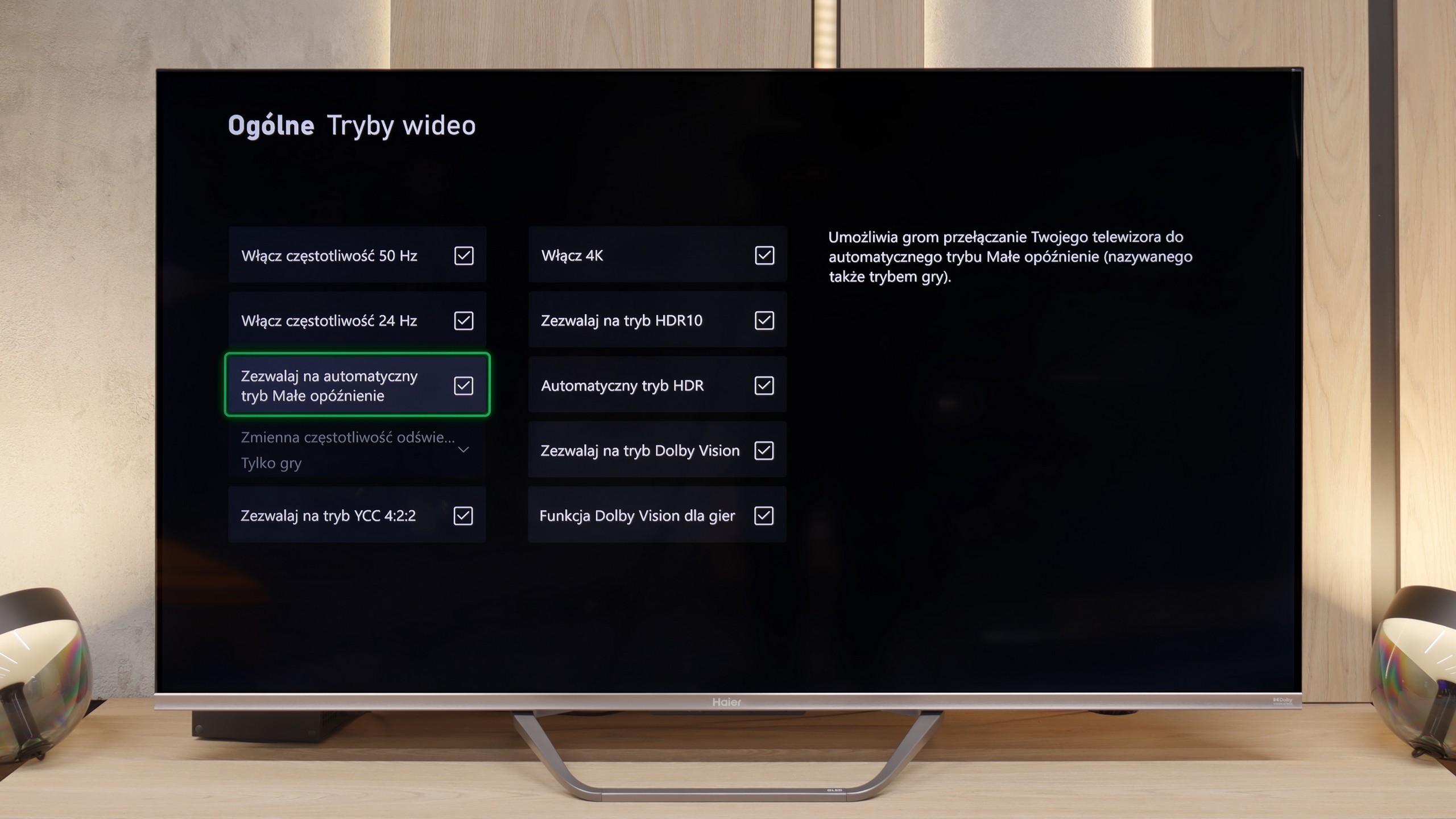
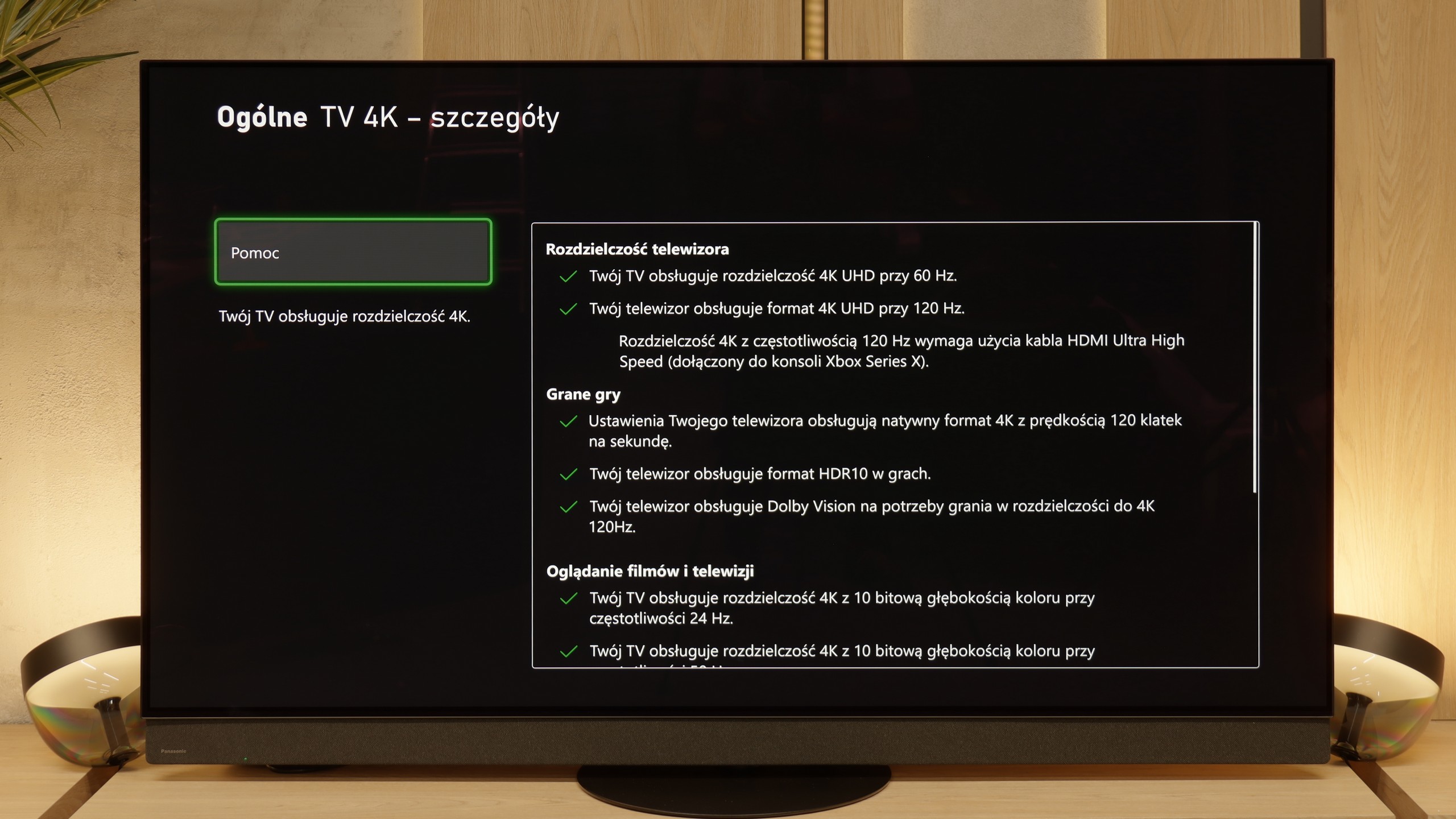
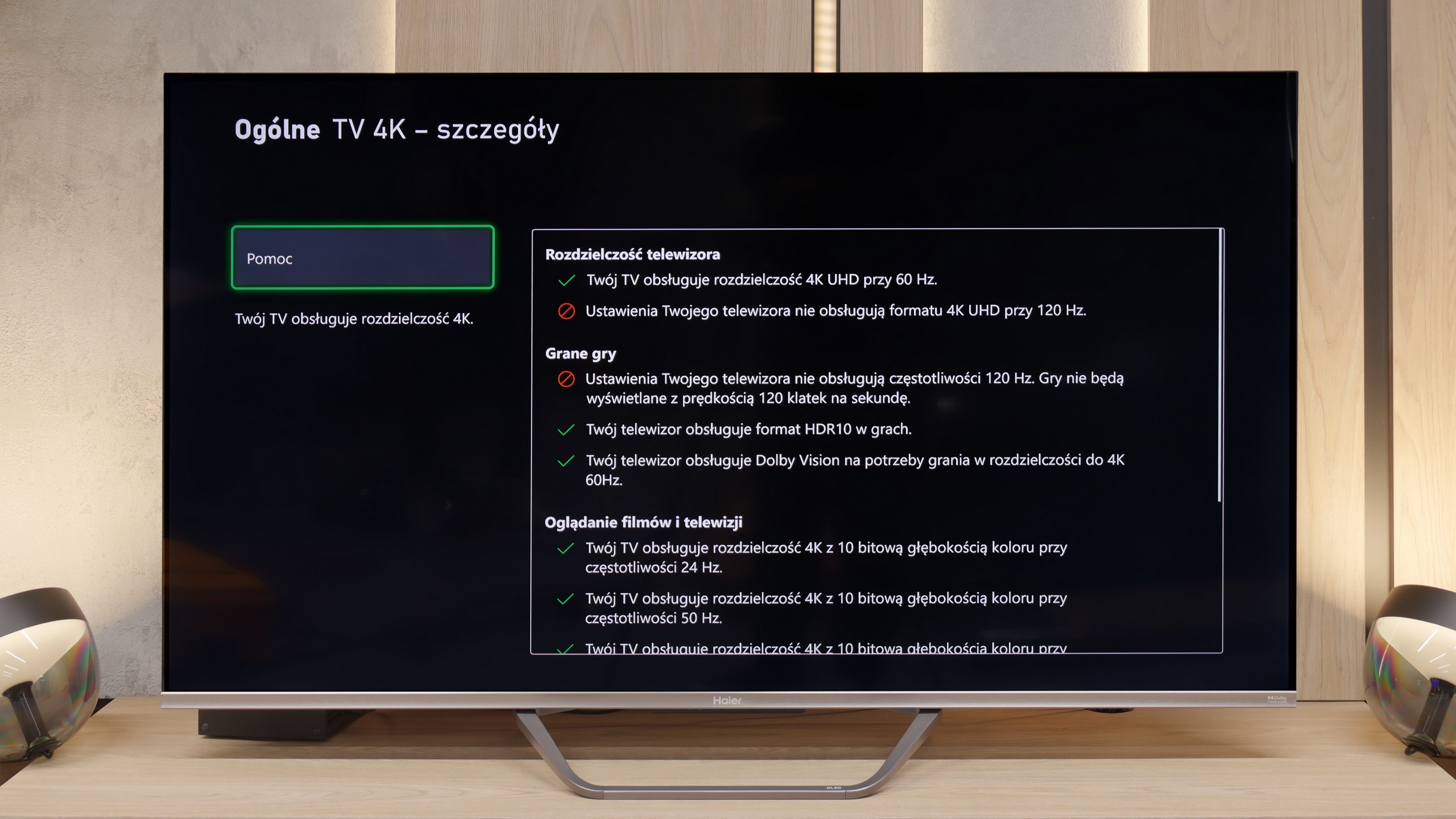


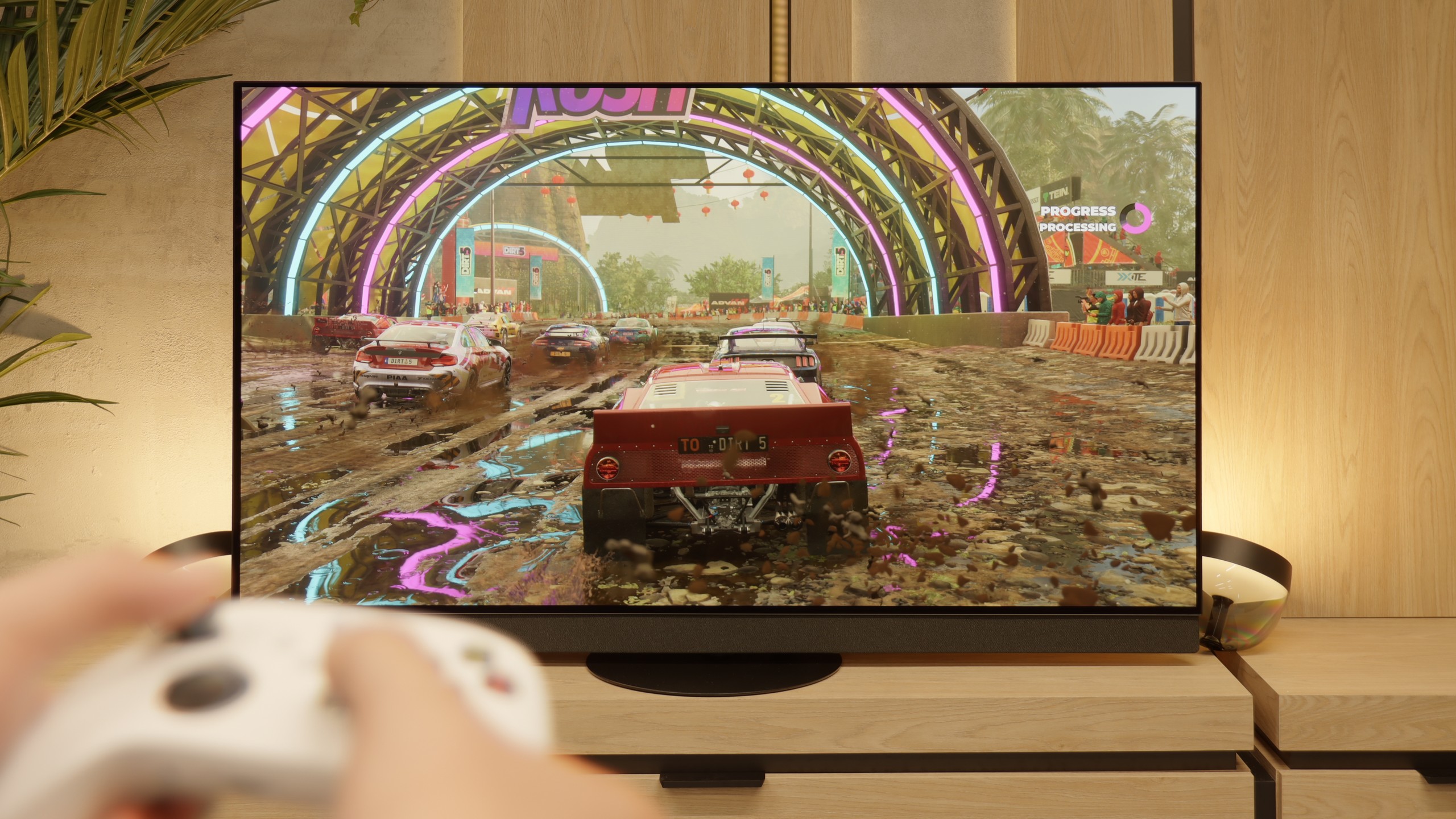

The Panasonic Z95B is completely equipped for gaming. Two HDMI 2.1 ports with full bandwidth of 48 Gb/s guarantee support for everything you can expect from a modern screen. There is VRR frame synchronization, an automatic game mode (ALLM), and full compatibility with HDR formats used in games. The TV supports both Dolby Vision for Xbox and the popular HGiG, which has been implemented correctly in this case, so it actually works as it should.
Although the brand is mainly associated with home cinema and equipment for filmmakers, there is also a place here for conveniences for gamers. It comes with Game Bar (or rather Game Circles) – visually it looks a bit unusual, but it does its job and allows you to quickly check the most important image parameters. What it really lacks for complete happiness is actually just four HDMI 2.1 ports instead of two. It's a minor issue, but one would expect a full set in a TV of this class.
Stepping into the gaming territory, the Haier Q80FUX proves to be quite a decent companion for the "casual gamer." On board, we find today’s highly desired features like VRR (variable refresh rate) and ALLM (automatic low latency mode). However, the biggest surprise is something else. Although we are not dealing with a 4K@120Hz panel, the TV can accept and display a 120Hz signal at a lower resolution (Full HD). This is a very useful feature, allowing the conscious switch of the console to a lower resolution mode in exchange for significantly higher fluidity, which is a perfectly acceptable compromise in the gaming world.
We won’t particularly complain about the lack of extras like the "Game Bar," as it’s just a nice addition. The most concerning issues arise when we enter the world of HDR in games. Due to the fact that the TV constantly adapts the signal "in its own way," setting the brightness on the console according to the HGIG standard is nearly impossible to accomplish as per the instructions. Worse still, in the Dolby Vision mode for games, the input lag rises to about 50 ms, which is a high enough value that essentially makes this mode unusable. However, generally, we wouldn’t recommend gaming on this TV in HDR mode, so these aren’t such serious shortcomings. The most pleasing aspect is the presence of 120Hz in Full HD, which makes the Q80FUX quite a nice TV for the occasional gamer.
Input lag
10/10
9.4/10
SDR
HDR
Dolby Vision
Regardless of the content being viewed, the input lag on the Z95B is extremely low – even in Dolby Vision, the TV operates at 120 Hz with a delay of less than 5 ms. This is a result that places it at the very top of screens for gaming. If we could, we would easily give it a rating of 11/10. 😉
If there is one category in which the Haier Q80FUX absolutely shines and shows its claws, it is input lag. In this area, the television presents results that are truly remarkable. In 120Hz mode (achieved, let’s remind ourselves, at a lower resolution), the input lag drops below 10 ms, which is an excellent value, worthy of high-end gaming monitors. Not much worse, and still at a very good level, is the classic 60Hz mode – here measurements steadily indicated around 12-14 ms. These are results that even significantly more expensive, gaming-specific designs would not be ashamed of. The only, but serious, drawback here is the Dolby Vision mode. As we established earlier, activating it raises the lag to an unacceptable level, so we definitely advise against using it during any interactive gameplay.
Compatibility with PC
8.6/10
6/10


The Z95B can easily be connected to a computer and used as a large monitor. Indeed, due to the WOLED pixel arrangement, the fonts do not appear as perfectly sharp as on typical monitors, such as those with IPS panels, and this can be noticeable during office work, but it's hard to consider it a serious issue. Rather, few people buy such a TV for Excel. 😉 When it comes to gaming on PC, there’s nothing to complain about. The 144 Hz mode works great, and we also have full support for G-Sync and AMD FreeSync, so frame synchronization works flawlessly with every graphics card. Despite minor issues with font display, it's hard for the Z95B not to perform well in this role – it just works phenomenally as a gaming screen.
We also checked how the Q80FUX works when connected to a computer. And here’s another pleasant surprise – it handles this really very well. The most important thing is that the fonts are very readable, so nothing blurs and you can work on it normally. Additionally, just like with consoles: we can set a lower resolution here to achieve a high refresh rate of 120Hz in return. What’s super important is that in this mode, G-Sync started up and worked correctly. This just confirms that this television is really a successful and efficient piece of equipment for gaming, including on a PC.
Viewing angles
8/10
3.3/10
In this regard, the Z95B performs very well. The decrease in brightness at an angle is only 11 percent, which is exactly the same as the best QD-OLED panels and the previous generation MLA from LG Display. As a result, even watching the TV from the side does not give the impression that the image is fading or hard to read.
Colors do fade slightly at extreme angles and are not as stable as in QD-OLEDs, but this is hard to consider a serious issue. The image still looks great, and one can be confident that watching the Z95B from a large angle will keep everything clear. It is also worth noting the rotating stand in terms of viewing angles, as it is a practical solution that allows you to easily position the screen so that everyone in the room has the best possible view.
Anyone planning screenings with a wide, family group must be aware of the fundamental compromise that Haier has opted for by implementing a VA panel in this model. This technology has indeed provided us with deep blacks and high contrast, but its inherent feature is also a noticeable narrowing of viewing angles. Just sitting a bit further to the side on the couch is enough to immediately notice how colors begin to lose saturation and the picture fades. It’s simply a classic trade-off – we gain something (contrast) at the expense of something else (angles) – and the Q80FUX fits perfectly into this scheme.
Daytime performance
7.4/10
4.8/10
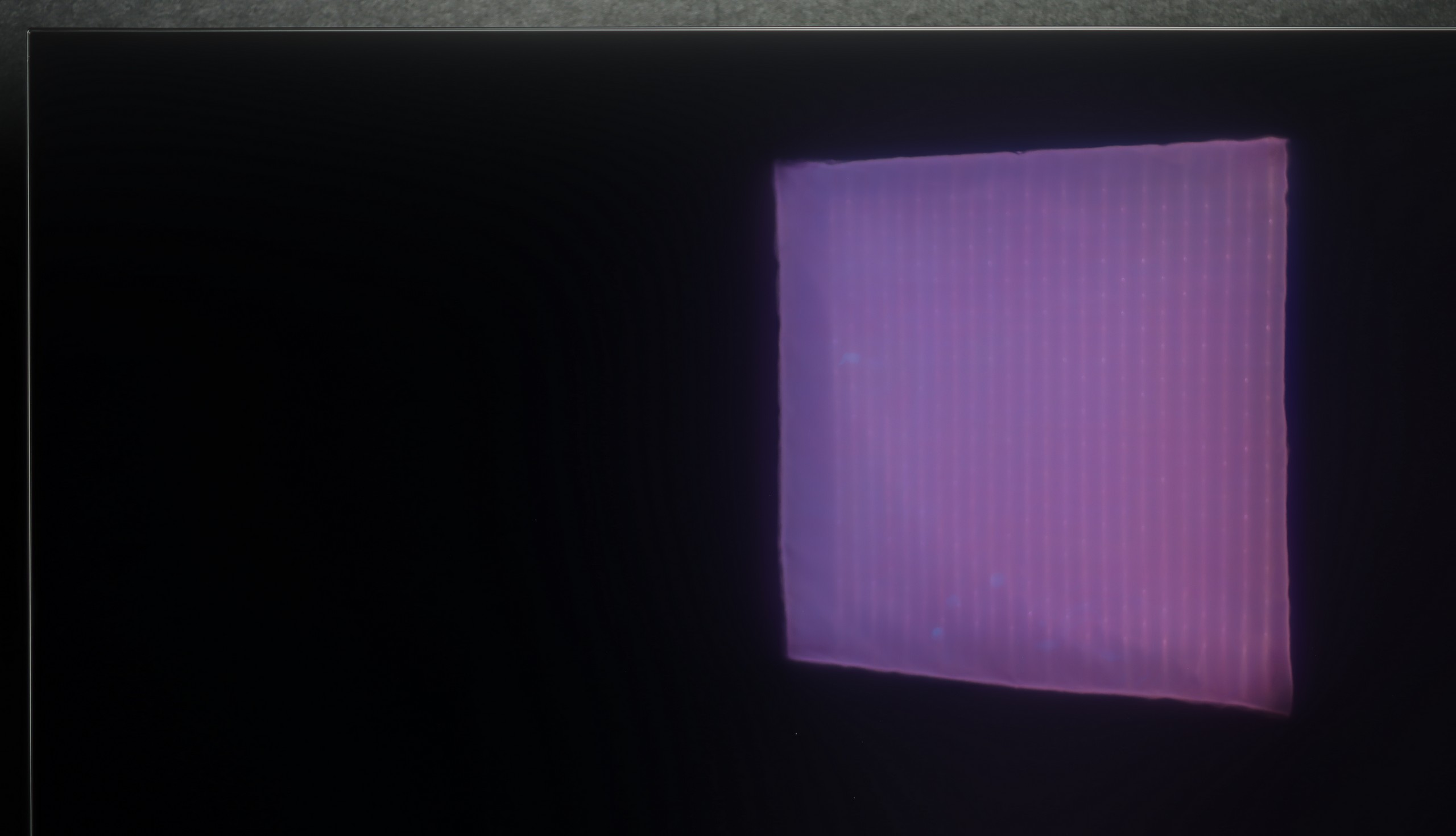
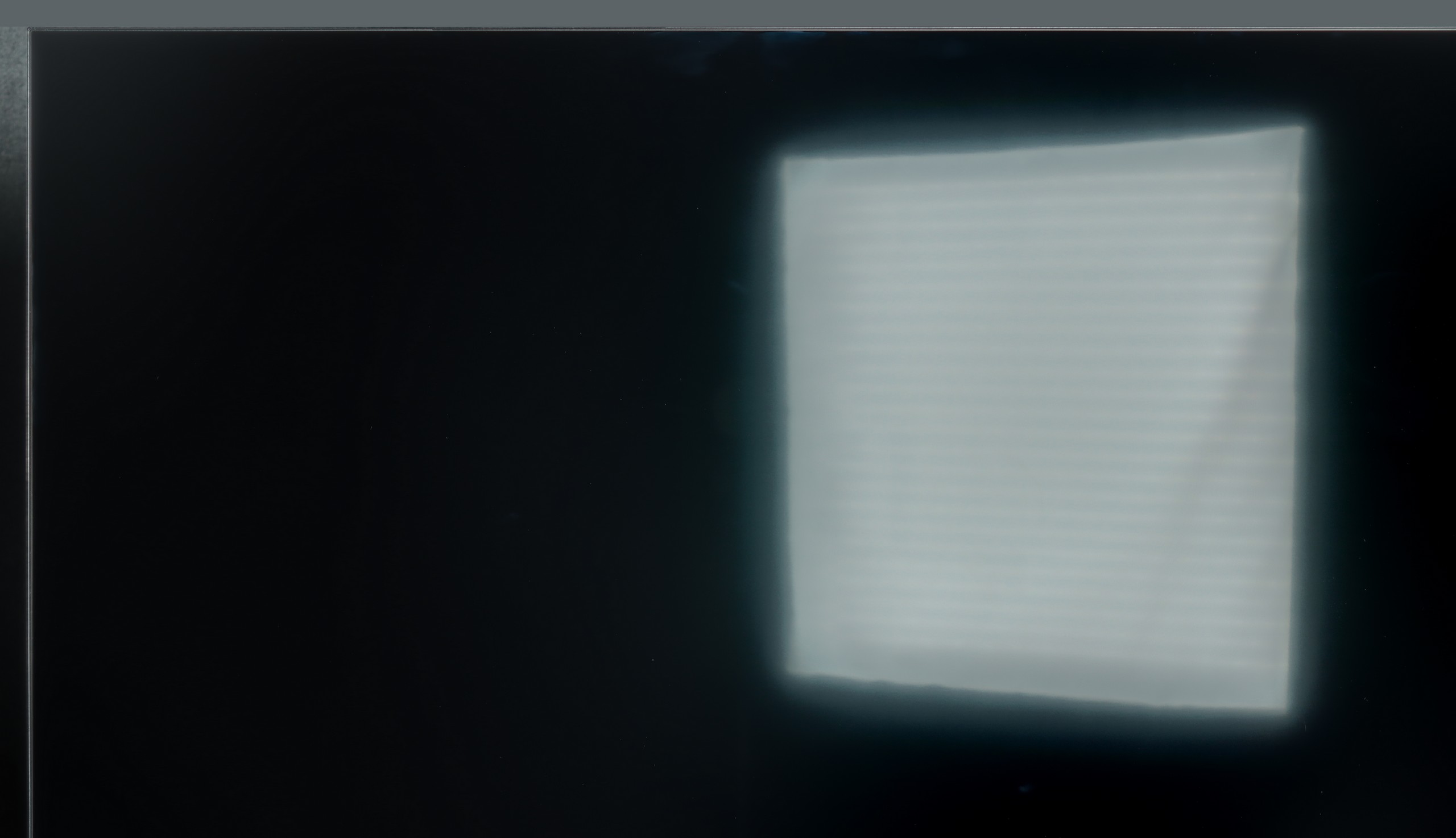


Panel brightness
Average luminance SDR
Haier Q80FUX: 317 cd/m2
Panasonic Z95B: 623 cd/m2
The year 2025 is a moment when one can confidently say that OLEDs are suitable for viewing even in heavily sunlit rooms. The new generation of WOLED panels used in the Z95B can achieve really high brightness – the average value for the Z95B in SDR mode is as much as 623 nits. This is a result that was beyond the reach of this technology just a few years ago. Of course, it is not the level of the best LCD TVs designed for bright living rooms, and the panel itself, glossy with a slight filter, does an average job of suppressing reflections. Nevertheless, it is hard to have major complaints. The Z95B will handle most daylight conditions with ease, and one can comfortably watch TV or movies even when plenty of light is coming into the room.
The clash of the receiver with the everyday challenges posed by a bright living room turns out to be quite decent in the case of the Q80FUX, although it is certainly hard to call it ideal. The matrix itself is equipped with a coating that handles the suppression of most ambient reflections fairly well. Equally importantly, even in more challenging lighting conditions, the screen is capable of maintaining pleasantly saturated colors. However, the weakness of this construction reveals itself where the power of the backlight comes into play. The previously mentioned, rather moderate maximum brightness (around 350 nits) means that when confronted with intense natural light coming through the window, the screen often struggles to "break through." On a sunny day, the image may simply lack the necessary expressive power.
Panel details
Subpixel Structure:

Panel uniformity and thermal imaging:
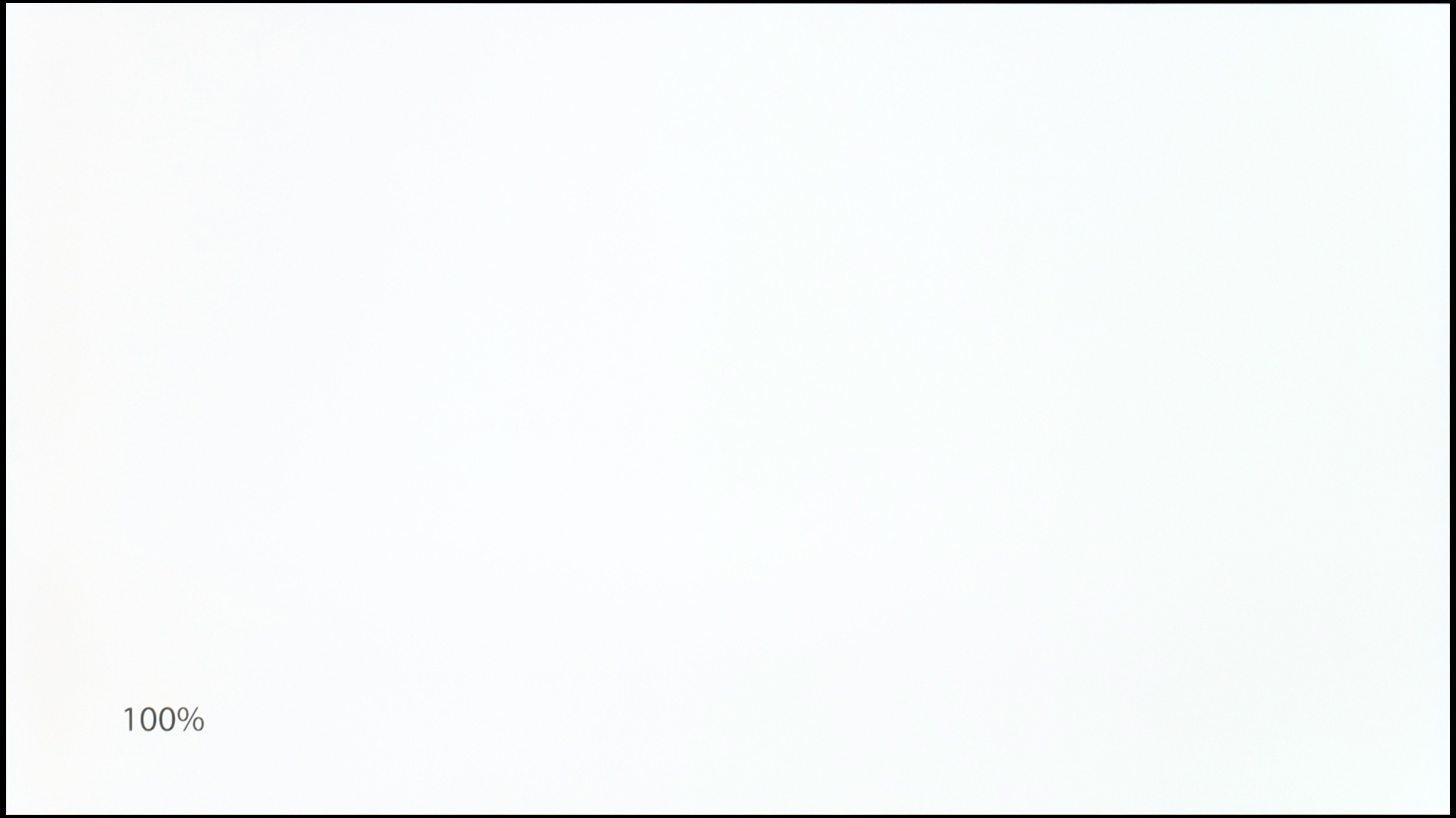

Panasonic Z95B
Haier Q80FUX
TV features
6.8/10
5.6/10
- HDMI inputs2 x HDMI 2.0, 2 x HDMI 2.1 48Gbps4 x HDMI 2.0, 0 x HDMI 2.1
- Other inputsRCA (Chinch)
- OutputsToslink (Optical audio), eARC (HDMI), ARC (HDMI), Mini-Jack (Headphones)Toslink (Optical audio), eARC (HDMI), ARC (HDMI), Mini-Jack (Headphones)
- Network InterfacesWi-Fi 2.4GHz, Wi-Fi 5GHz, Ethernet (LAN) 100MbpsWi-Fi 2.4GHz, Wi-Fi 5GHz, Ethernet (LAN) 100Mbps
- TV receptionDVB-T, DVB-T2, DVB-S, DVB-S2, DVB-CDVB-T, DVB-T2, DVB-S, DVB-S2, DVB-C
Classic features:
- Recording to USB (terrestrial TV)
- Recording programming
- Picture in Picture (PiP)
- RF remote control (no need to aim at the screen)
- Backlit remote control
- Teletext
- Audio only mode
- Bluetooth headphones support
- Simultaneous Bluetooth headphones & TV audio
Smart features:
- AirPlay
- Screen mirroring (Windows Miracast)
- Voice search
- Voice search in native language
- Ability to connect a keyboard and mouse


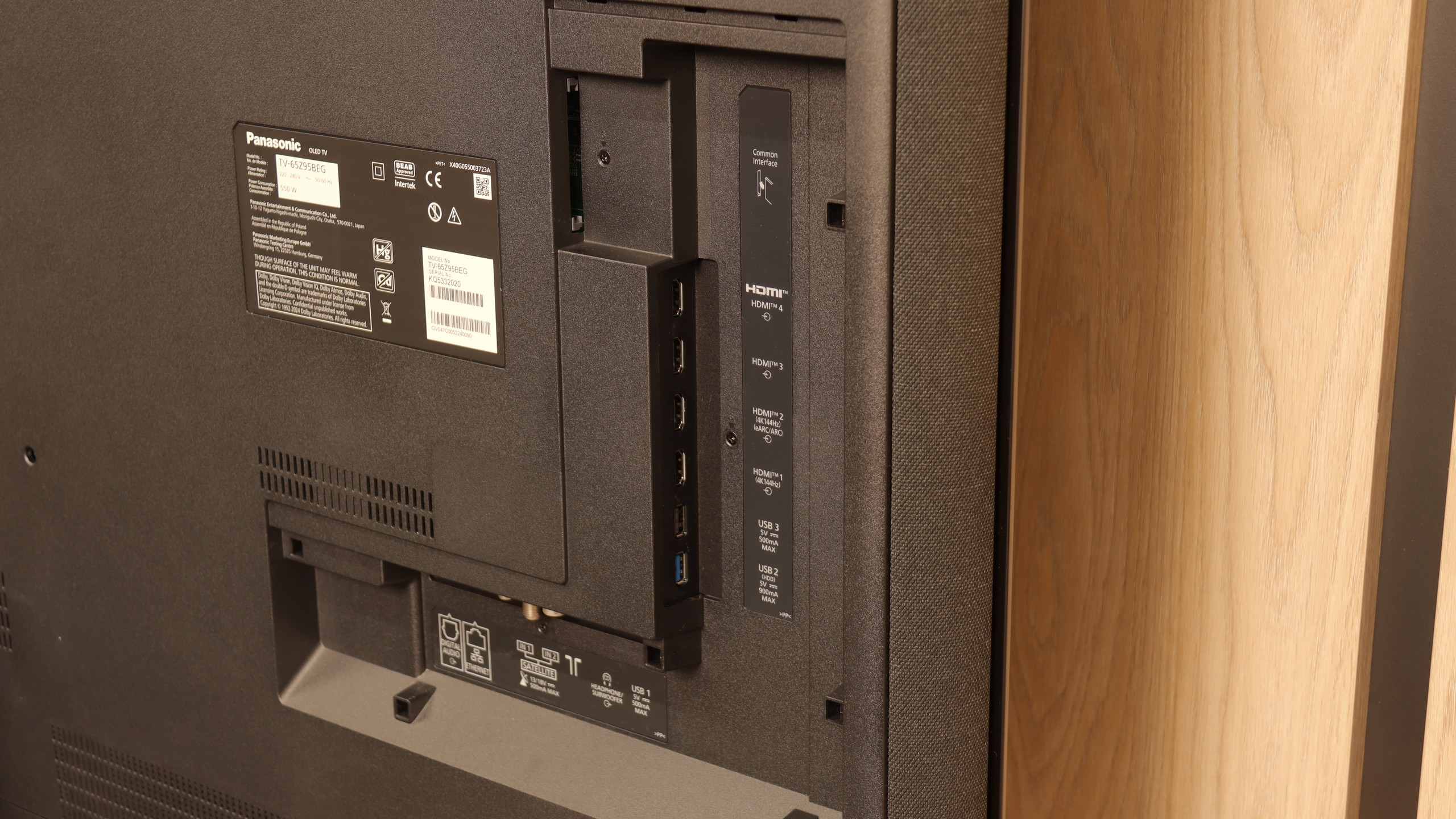
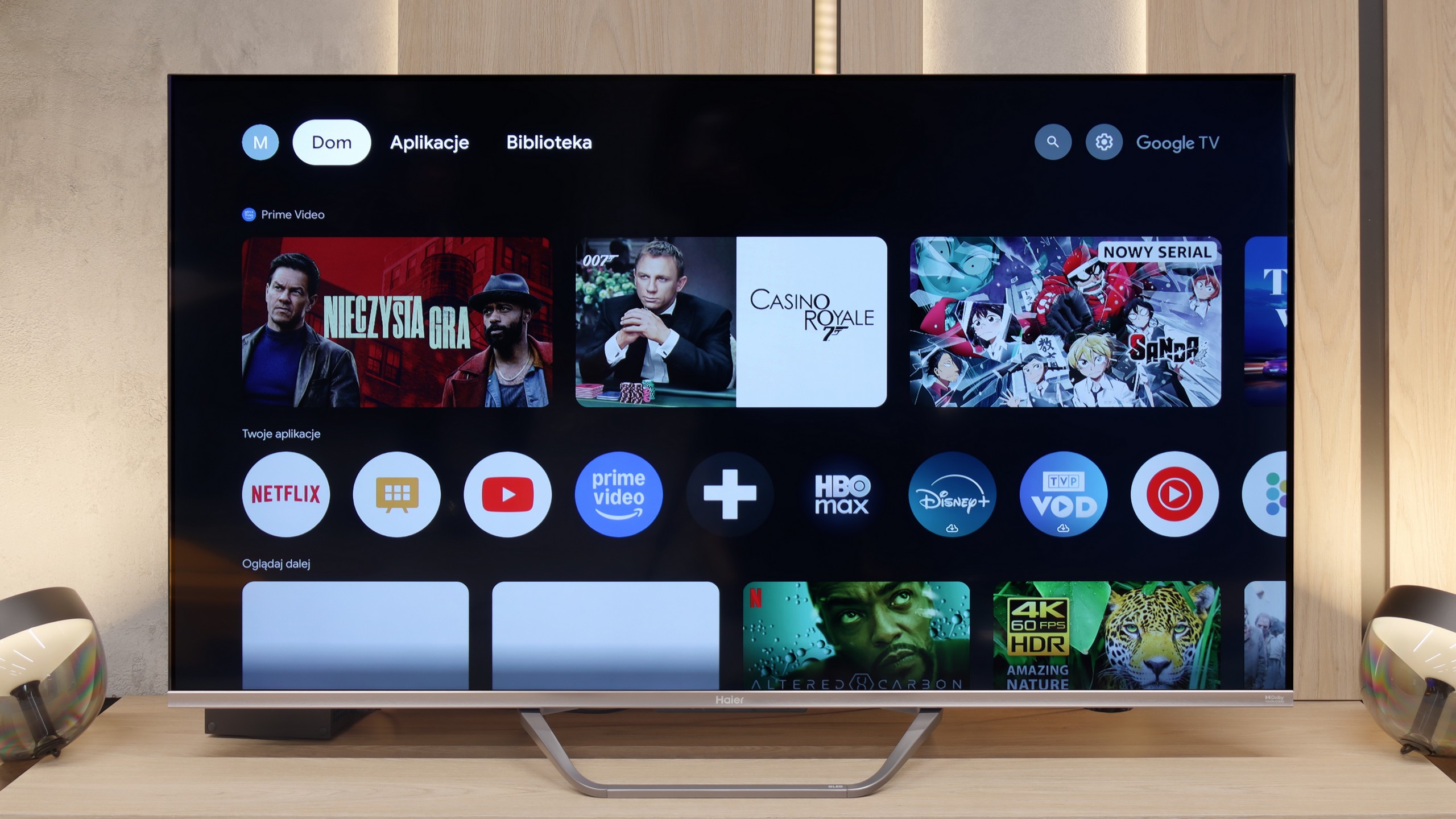
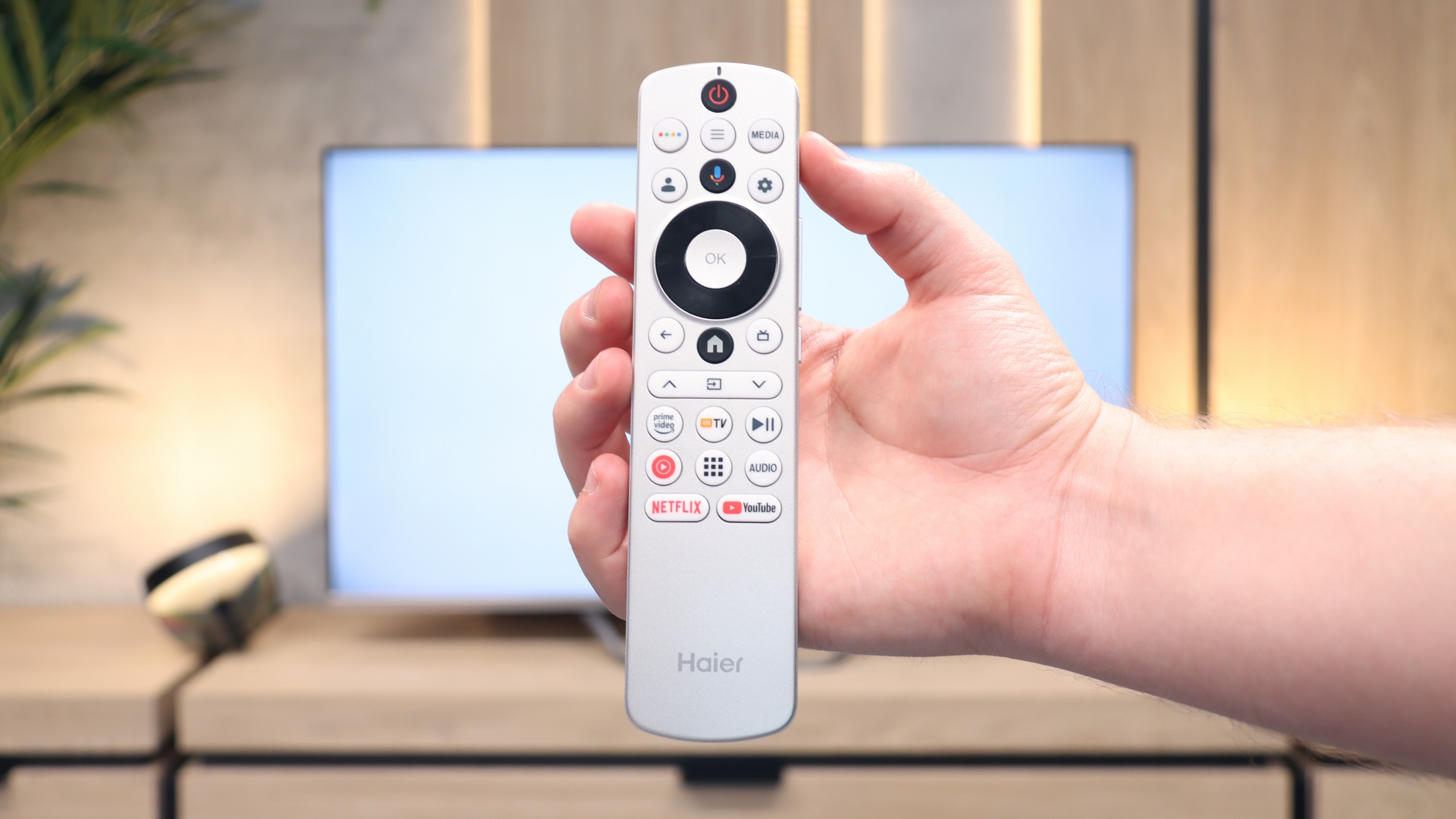

Smart TV: Amazon FireTV
Panasonic in the Z95B uses the Fire TV system, a platform created by Amazon. This is quite a change, as just two years ago the company relied on its own Linux-based system. At first glance, everything looks good – the interface is clear, and the operation is quite simple. Additionally, we have AirPlay, which allows you to stream photos or videos from an iPhone, and screen mirroring from both Windows and Android phones. The TV also works with the Amazon Alexa voice assistant, but here a significant limitation quickly appears. In practice, only a few of the most popular languages, such as English, work well, while Polish is still unavailable, and it's unclear when it will be added.
Classic Features
Here, the situation gets at least a bit strange. During tests in the editorial office, the TV refused to search for any channels – neither satellite nor terrestrial. As a result, we couldn't check the functionality of PiP or the tuner itself. The only certain feature is USB recording, as when a flash drive is connected, the TV immediately asks if we want to format it for that purpose. The remote control looks quite classic – it is large, with a full numeric keypad, and a plus is that you don't have to aim at the screen, as it works with RF technology.
Issues in Daily Use
The biggest disappointment arises with the apps and system stability. Some apps are completely unavailable in Poland, others can be found, but they cannot be downloaded as they are tied to a specific market. This is compounded by strange bugs, untranslated menu items, and occasional "freezes" that can effectively take away the enjoyment of using such a good screen as the Z95B. So, one could say that while the Z95B impresses with its picture quality as a "monitor," as a smart TV, it can be simply frustrating and falls short in every aspect.
SmartTV on Haier Q80FUX: GoogleTV
First, let's tackle the smart layer, which is managed by the Google TV system on the Q80FUX. This is theoretically a huge advantage, opening access to an endless library of applications, facilitating screen mirroring from mobile devices, and offering convenient voice search. Unfortunately, just like in other models from this brand that we've tested, the implementation of this platform leaves much to be desired. It’s not even about drastic freezes or delays in navigation, but rather a festival of minor errors, oversights, and terrible translations in the menu. It’s hard to regard "Google TV" in Haier’s version as comparable to what we know, for instance, from Sony or TCL receivers, even though the same proudly sounding name appears on the box.
Classic Features
Moving on to the classic, practical functions of the television, the picture does not improve at all. The only commendable aspect is the presence of Bluetooth connectivity and an unusual yet useful relic from the past in the form of an analog headphone output jack. Other than that, it’s hard to find anything that would excite us. Due to problematic software, the receiver (just like its predecessors in our tests) was unable to find any terrestrial TV channels, while other TVs connected to the same installation had no issues whatsoever. The remote control itself is also strange – its design might appeal to some, but due to the lack of a numeric keypad and the absurd placement of some buttons on the side edge, it definitely cannot be called senior-friendly.
Playing files from USB
3.5/10
9.6/10
Supported photo formats:
Maximum photo resolution:

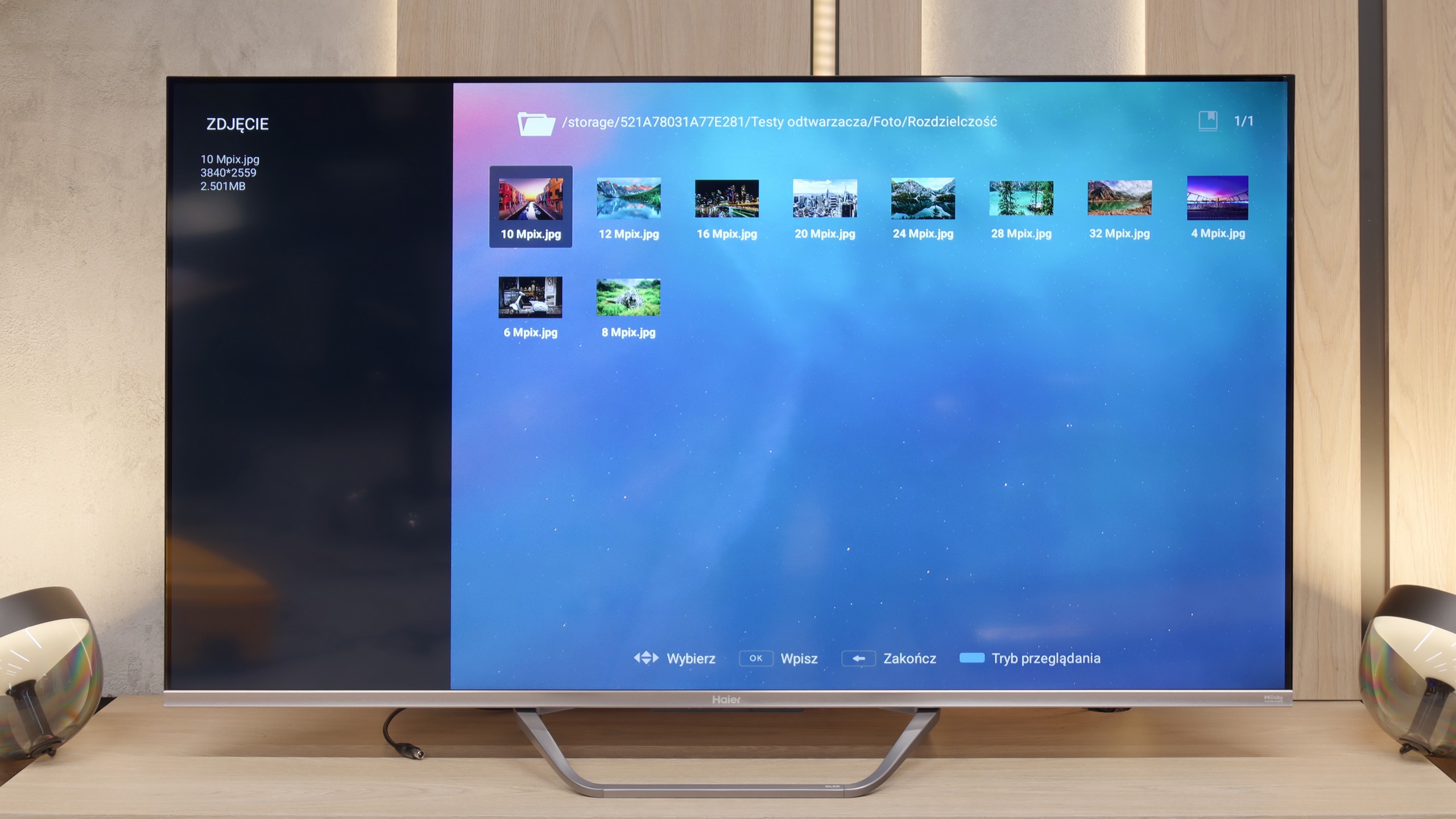
Here we also encountered another problem with the Fire TV system. The built-in player handles popular audio and video files without any issues, so at first glance, everything seems fine. However, the problem arises when we want to enable subtitles in movies. We were unable to launch any format – neither .srt, nor .sub, nor .txt. Regardless of the settings, the subtitles simply did not appear. So if you have a movie with a separate subtitle file, you are forced to watch it in the original language unless the subtitles are permanently embedded in the image. For a TV of this class, this is quite a disappointment and further proof that Fire TV still has a lot of shortcomings that can ruin the enjoyment of use.
We must admit that after a series of setbacks we encountered when assessing the overall implementation of the Google TV system, we approached the multimedia player test with considerable caution. Meanwhile, in this one specific aspect, the Q80FUX served us a real surprise. The built-in application for handling files from USB drives works just great. This software component seems to be completely immune to the issues afflicting the rest of the system, opening virtually all the most important and popular video file formats we presented to it.
Apps
7.2/10
9.6/10














































Sound
8.9/10
5.5/10
- Maximum volume91dB84dB
- Dolby Digital Plus 7.1
- Dolby True HD 7.1
- Dolby Atmos in Dolby Digital Plus (JOC)
- Dolby Atmos in Dolby True HD
- DTS:X in DTS-HD MA
- DTS-HD Master Audio
The built-in audio system in the Panasonic Z95B is truly impressive. The manufacturer has added an extra soundbar here, which completely changes the audio experience in the TV – this time it can be confidently said that no external equipment is needed to enjoy full and dynamic sound. The bass is clear and surprisingly strong, dialogues remain understandable even during louder scenes, and the TV itself can play quite loudly, reaching levels up to 91 decibels. It is also a plus that it fully supports Dolby Atmos, so if you use movies or streaming services that support this format, you can expect spatial and impressive sound. One limitation is the lack of support for DTS:X – if someone plans to connect a home theater system or Blu-ray player with this standard, they must be aware that the TV will not play it, but this should not be a major concern considering how all manufacturers approach this standard. I guess we have to come to terms with that.
Turning to the issue of acoustic "experiences," the Haier Q80FUX seems to adhere to the principle that sound should simply be. And it is – that’s about all that can be said about it. The built-in speakers produce sound that is exceedingly flat, lacking character, and most importantly, they lack any clear bass foundation. One comfort is the fact that the TV supports Dolby Atmos format. But let’s be honest: to truly take advantage of the benefits of this codec and hear the promised space, passive decoding capability is not enough. Connecting an external home theater system or at least a decent soundbar is, in this case, not just a recommendation but an absolute necessity.
Sound Quality Test
No sound test video
Acoustic Measurements
91dBC (Max)
75dBC
84dBC (Max)
75dBC
